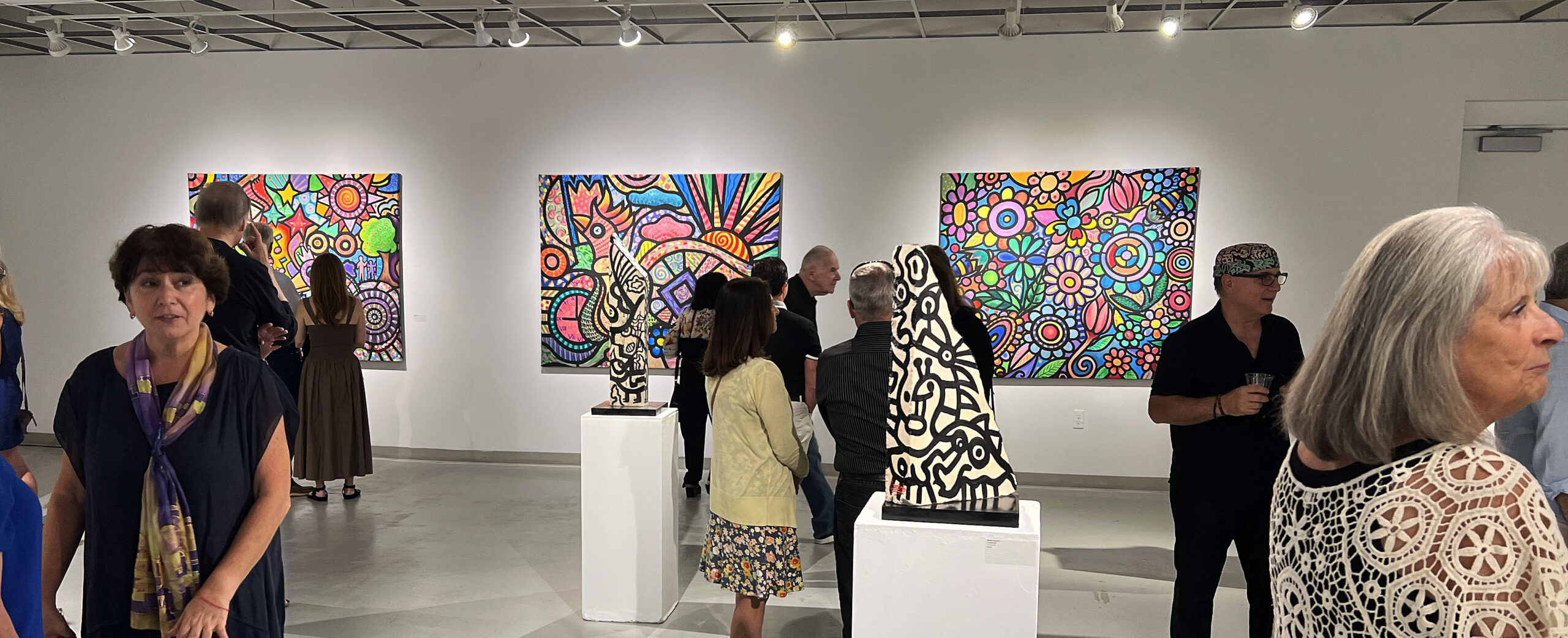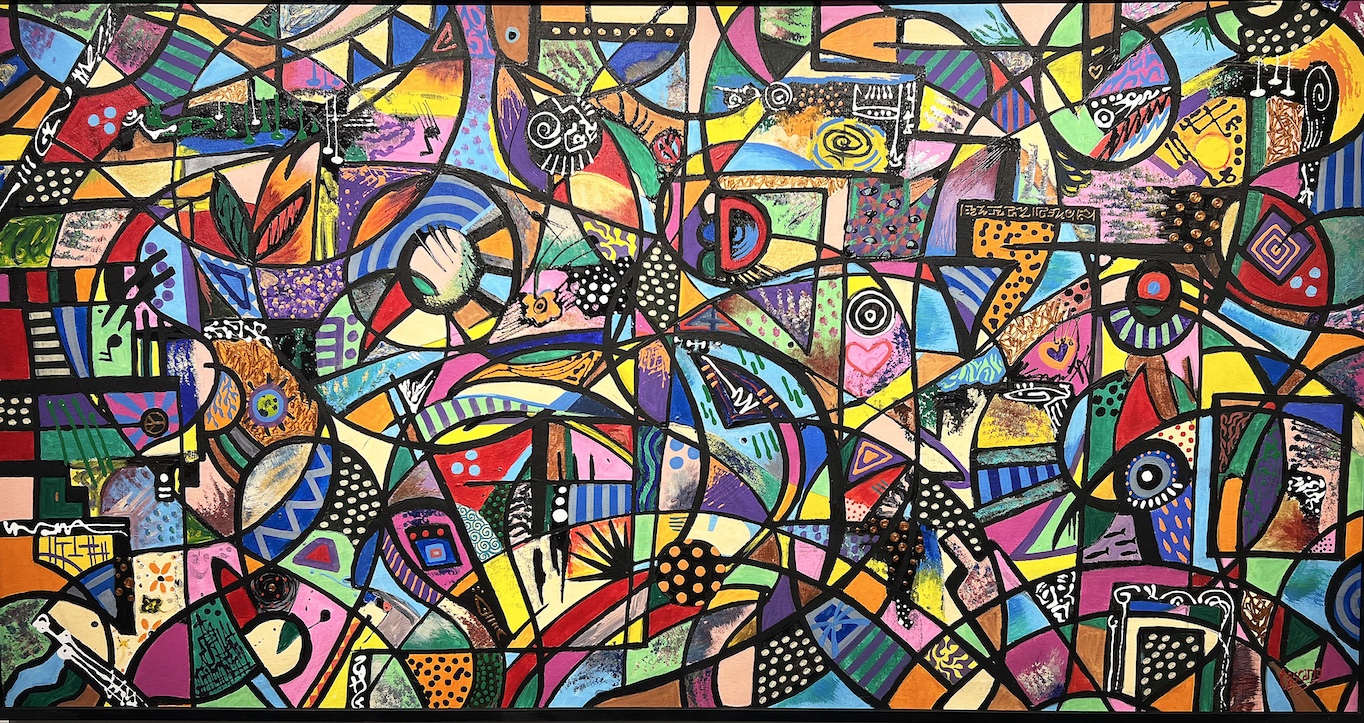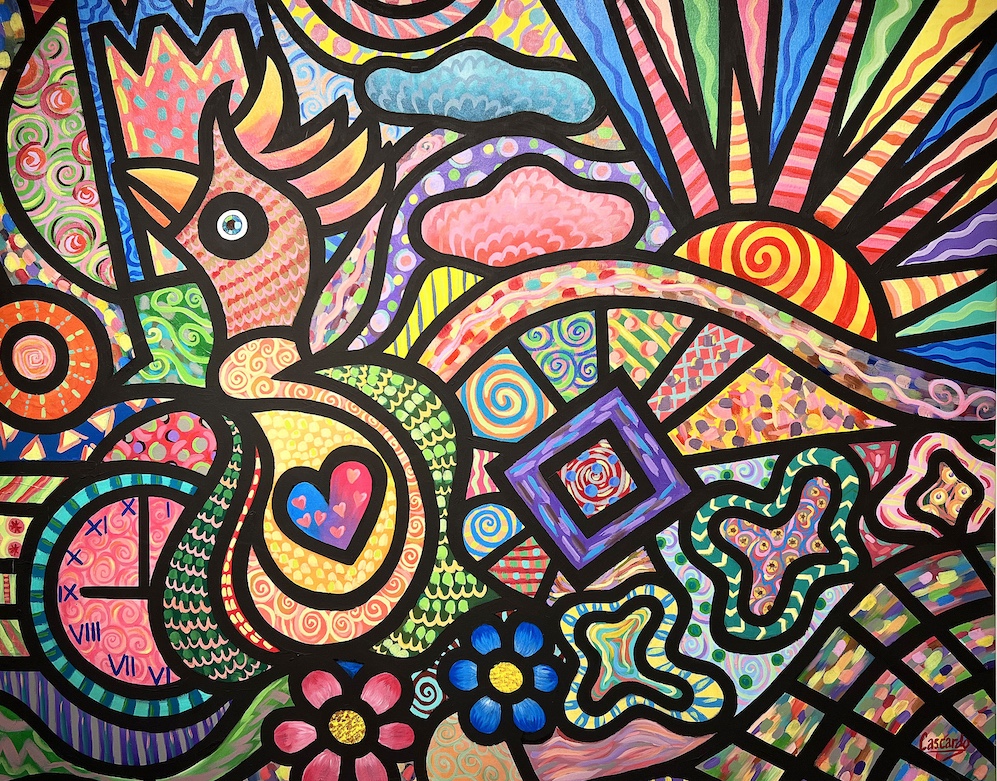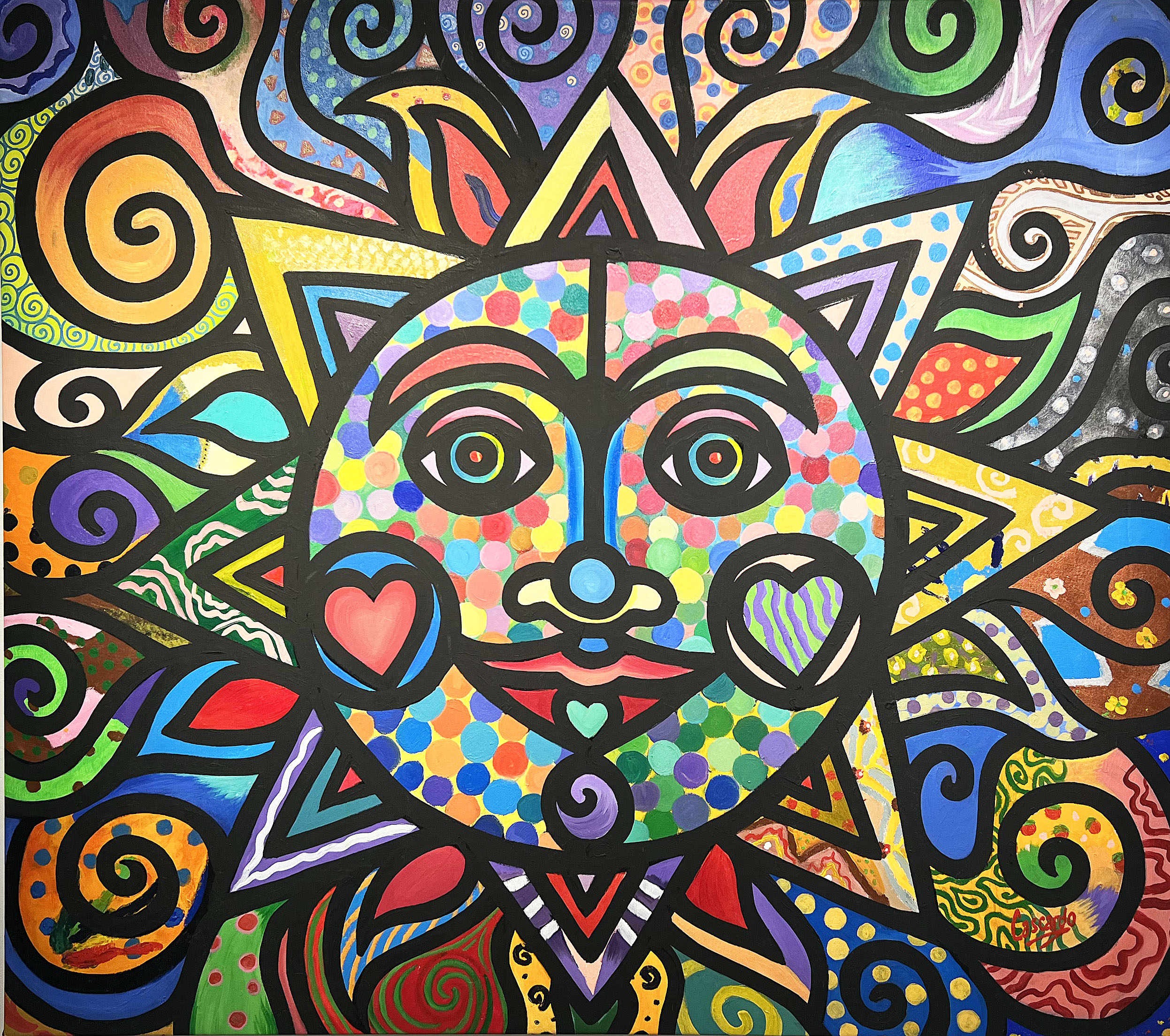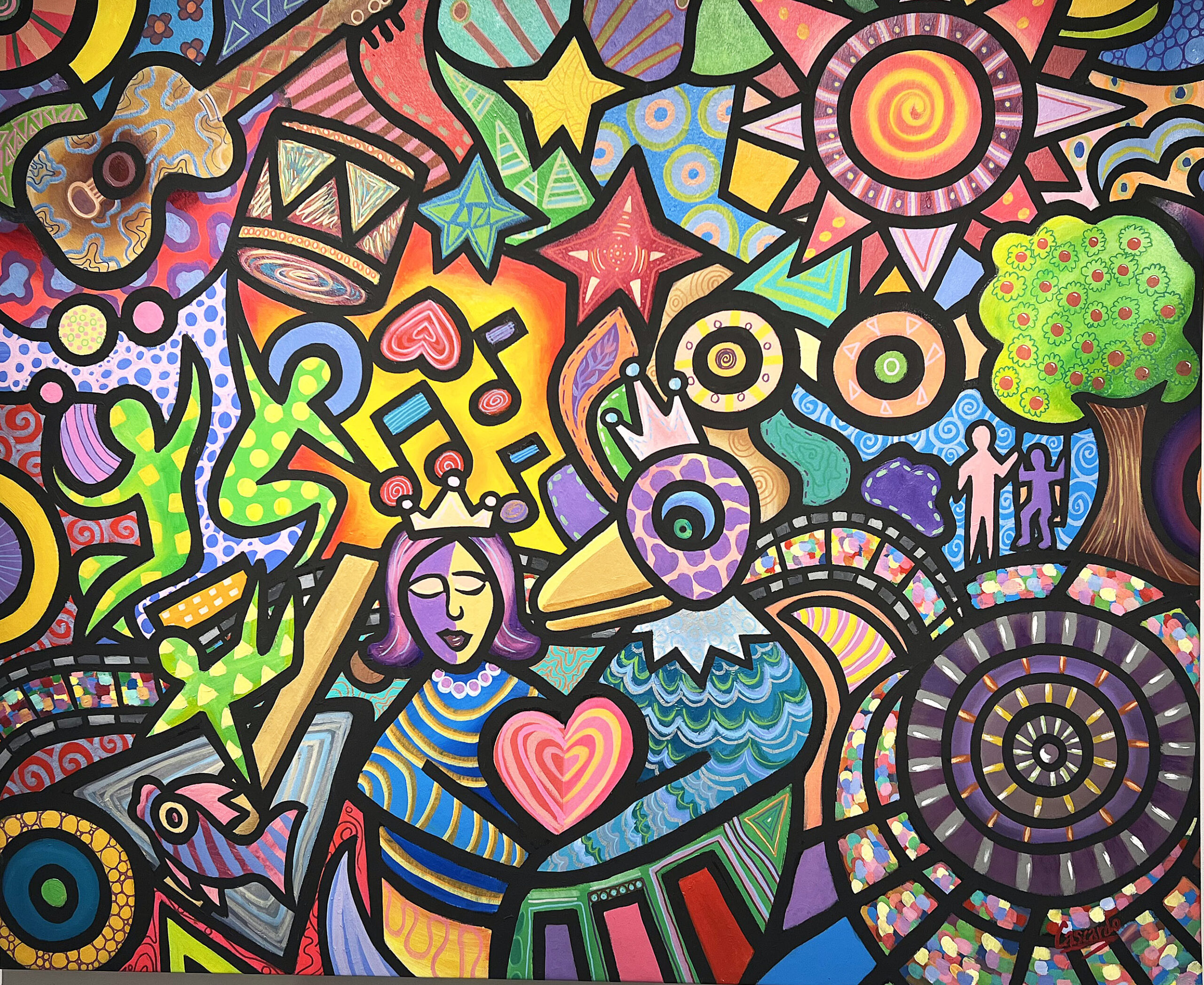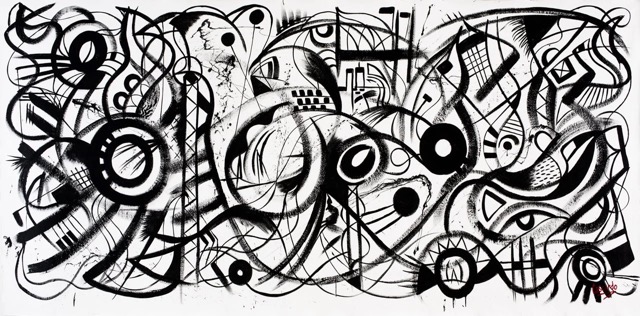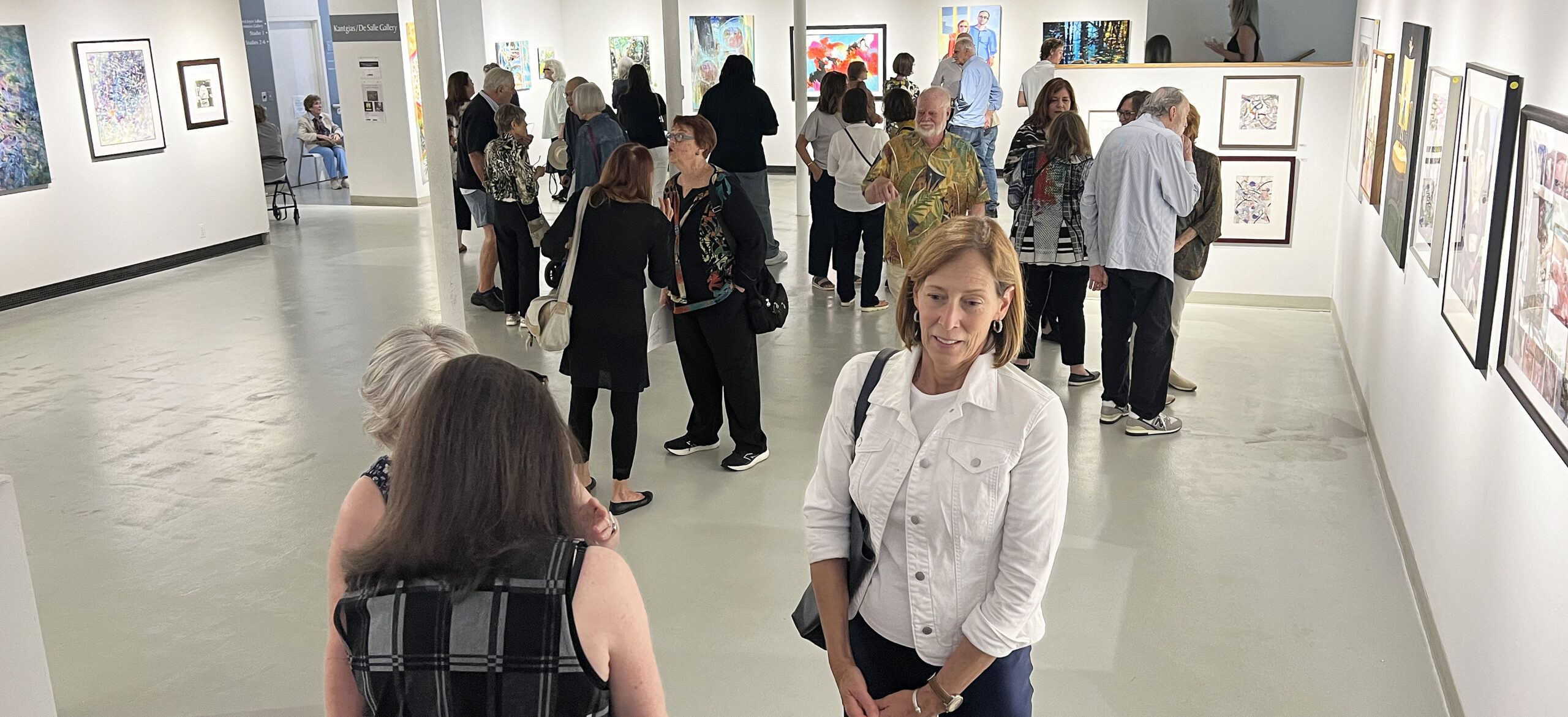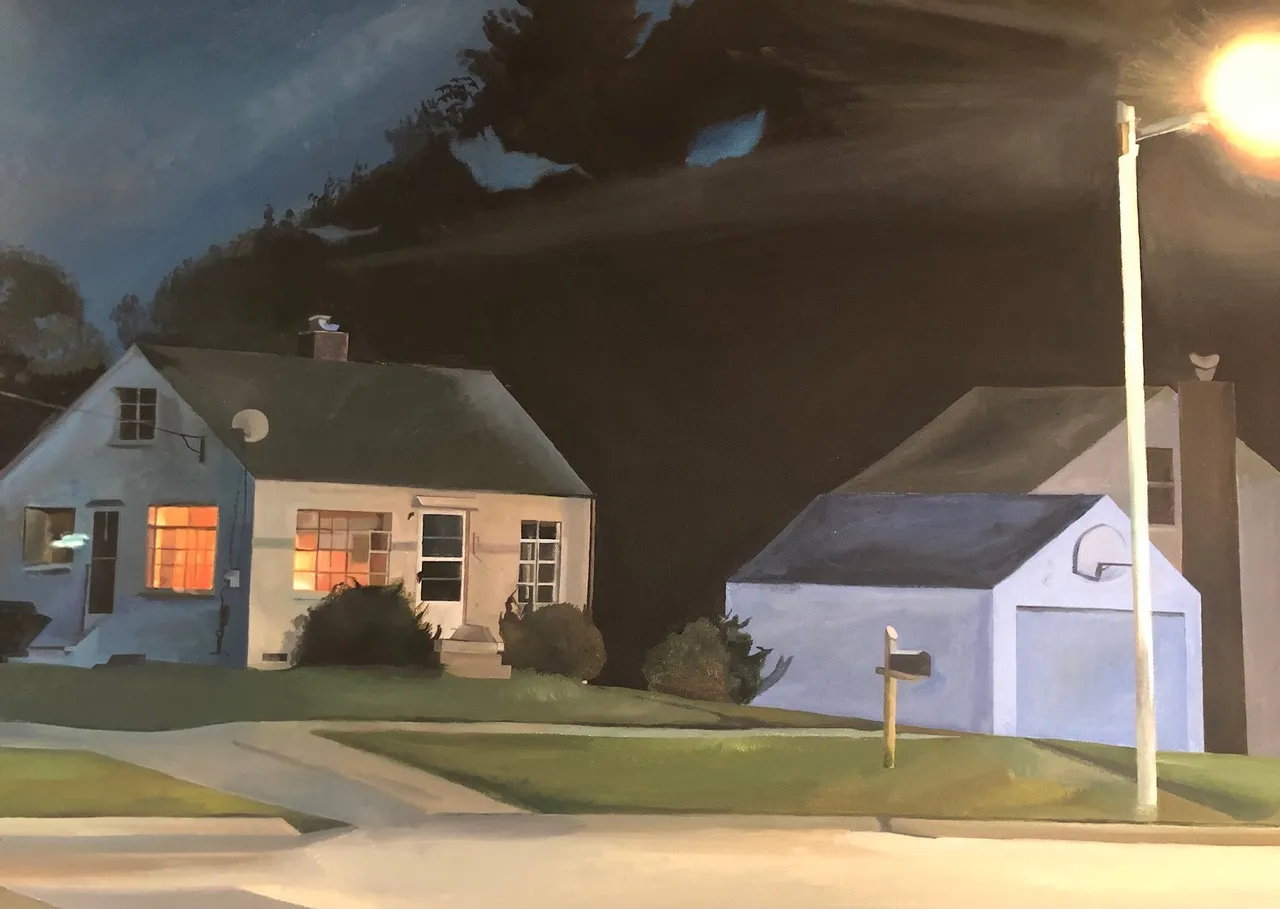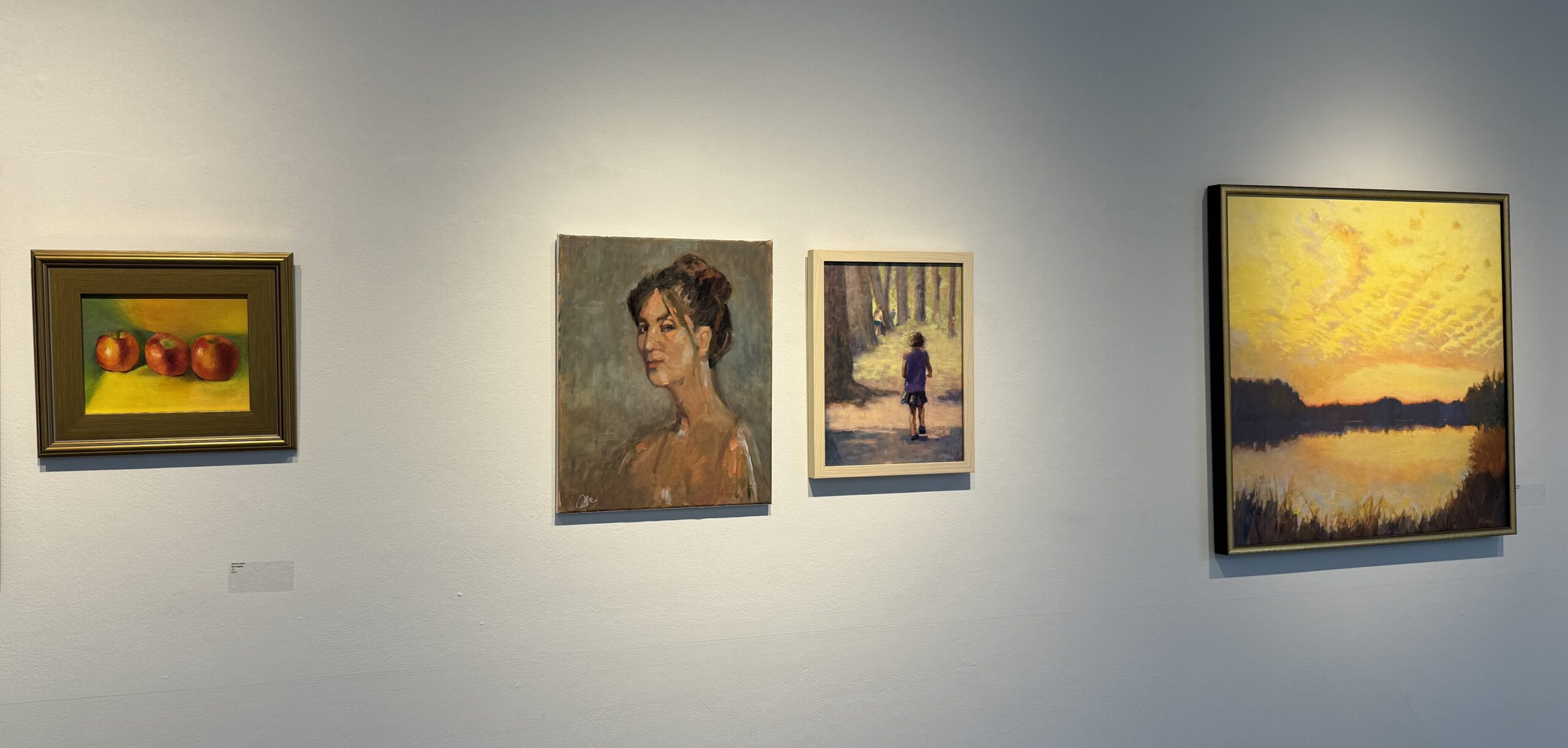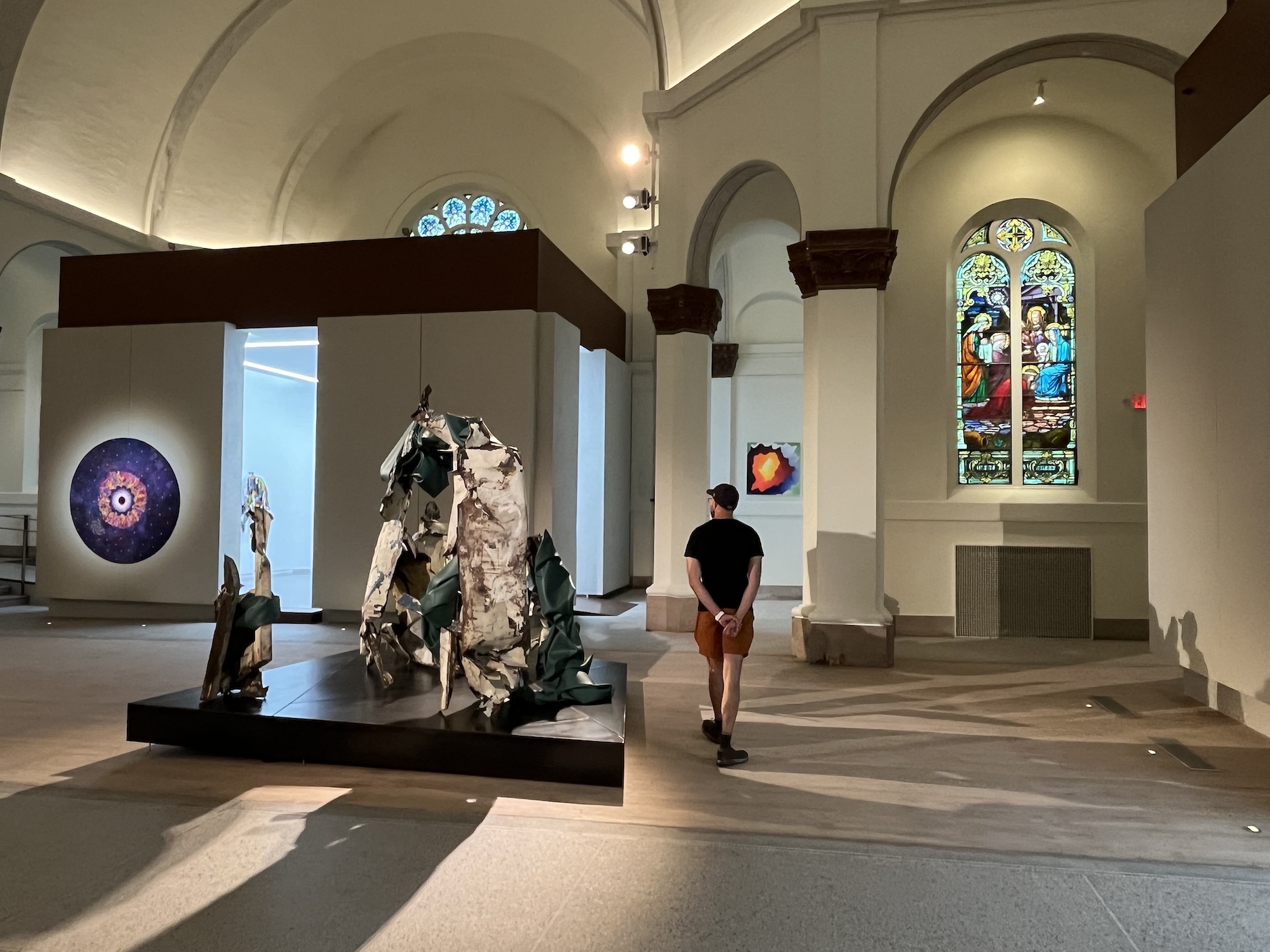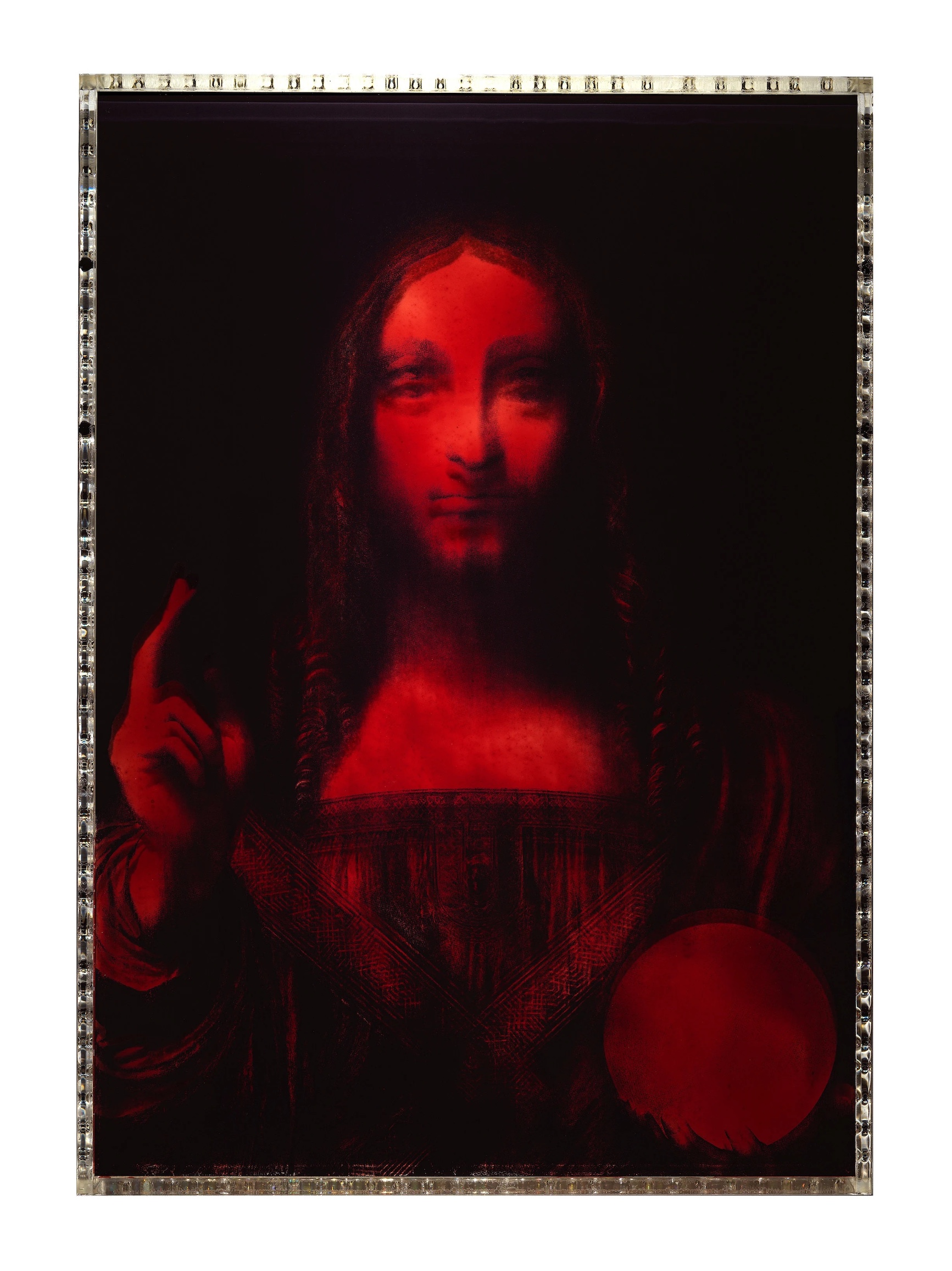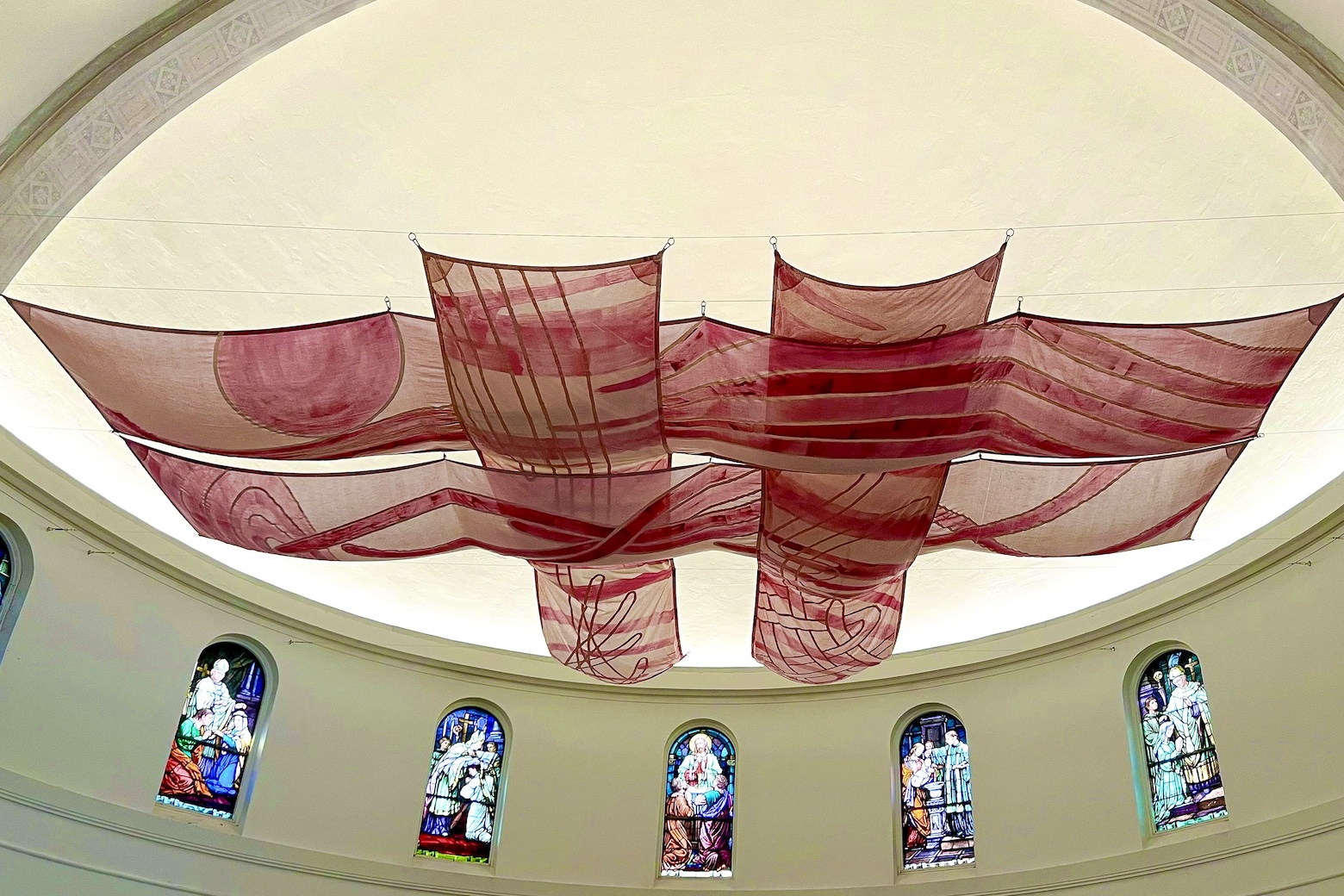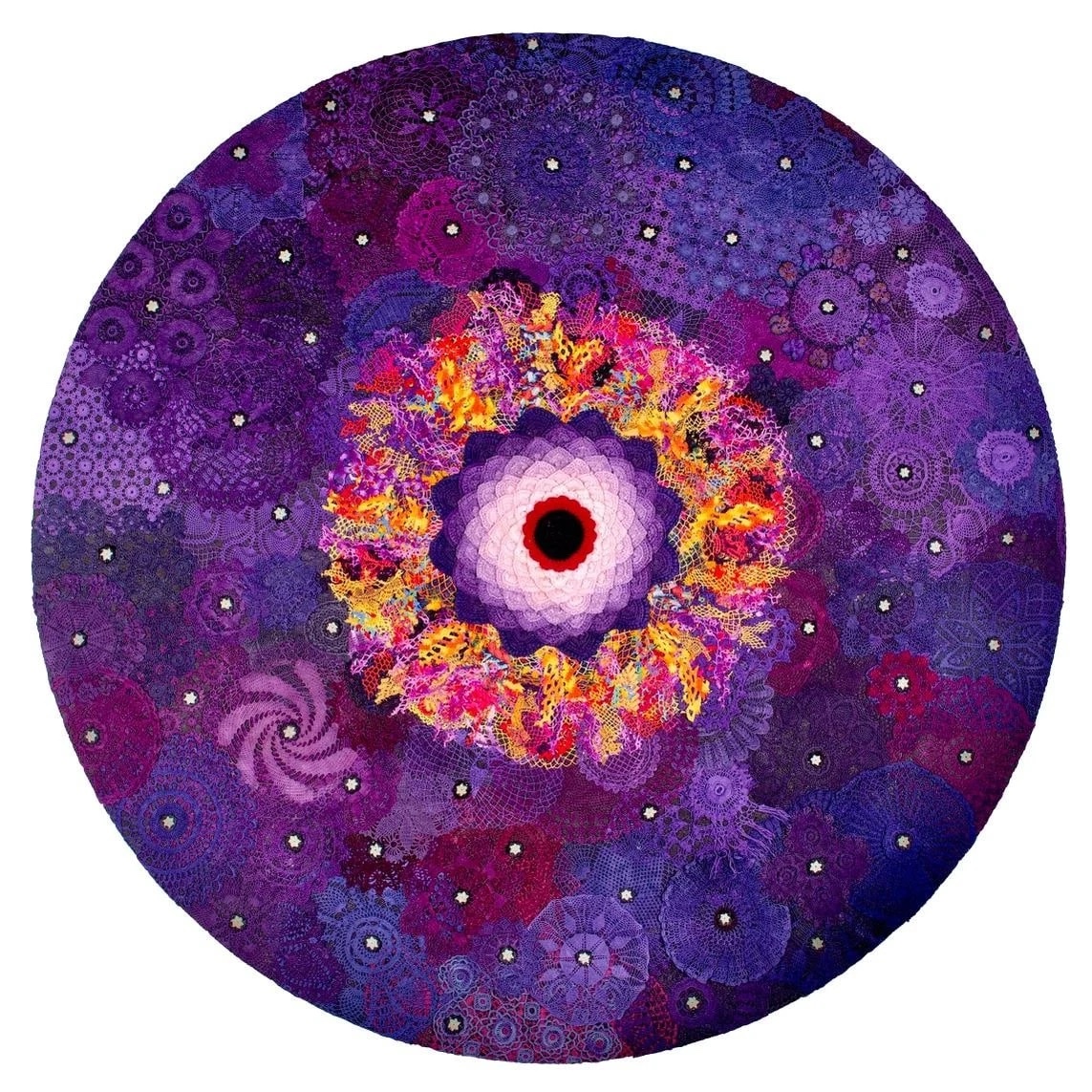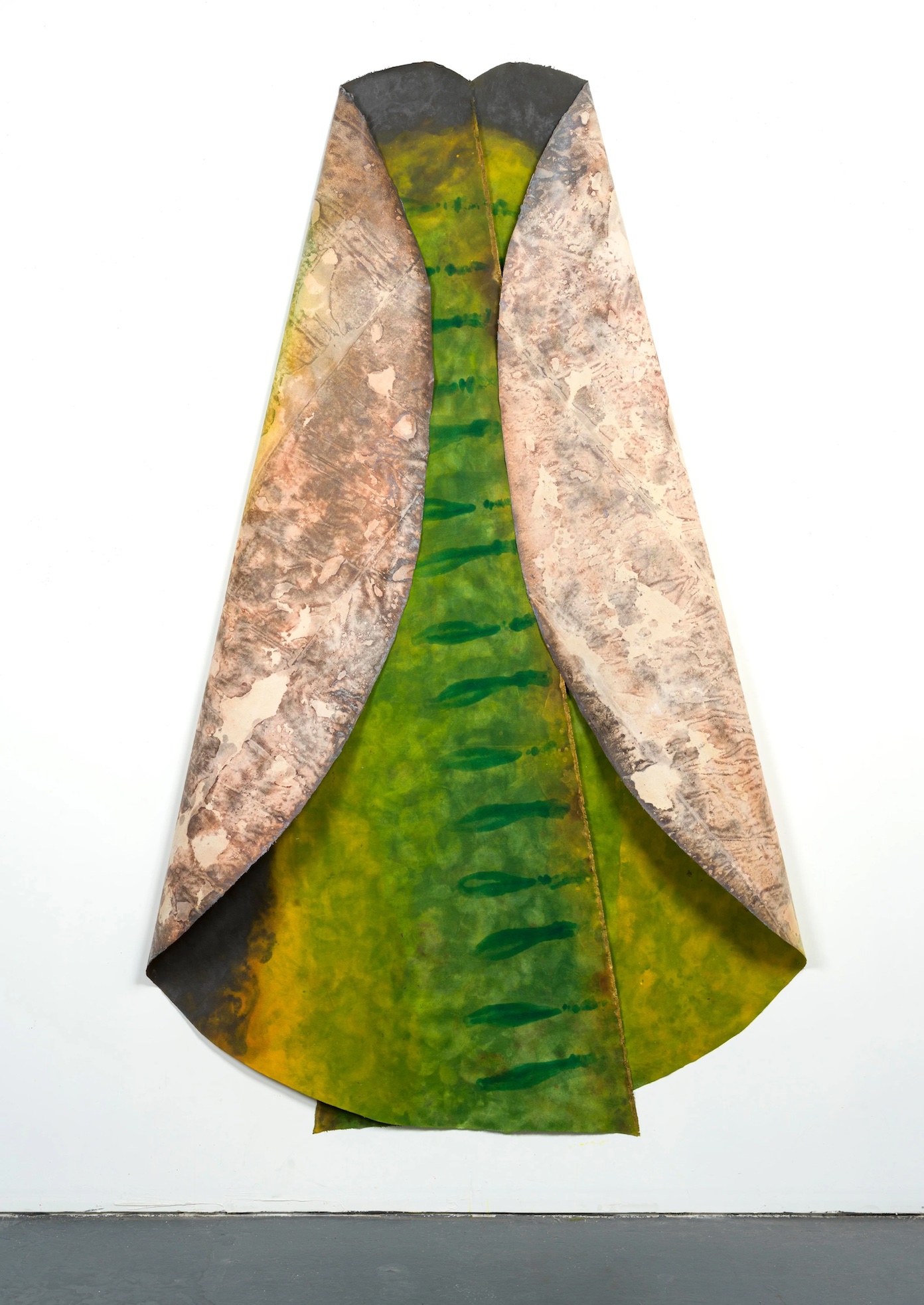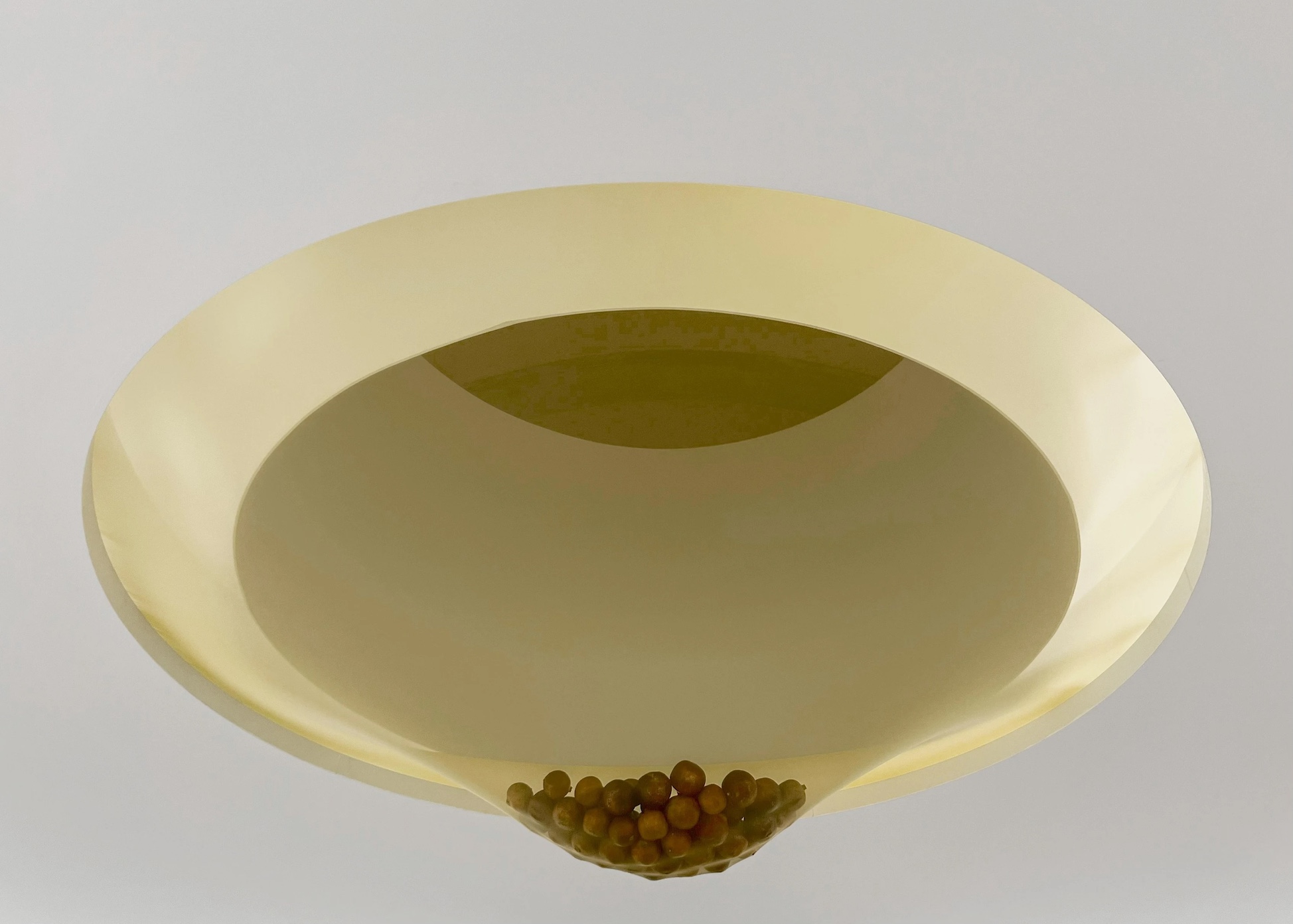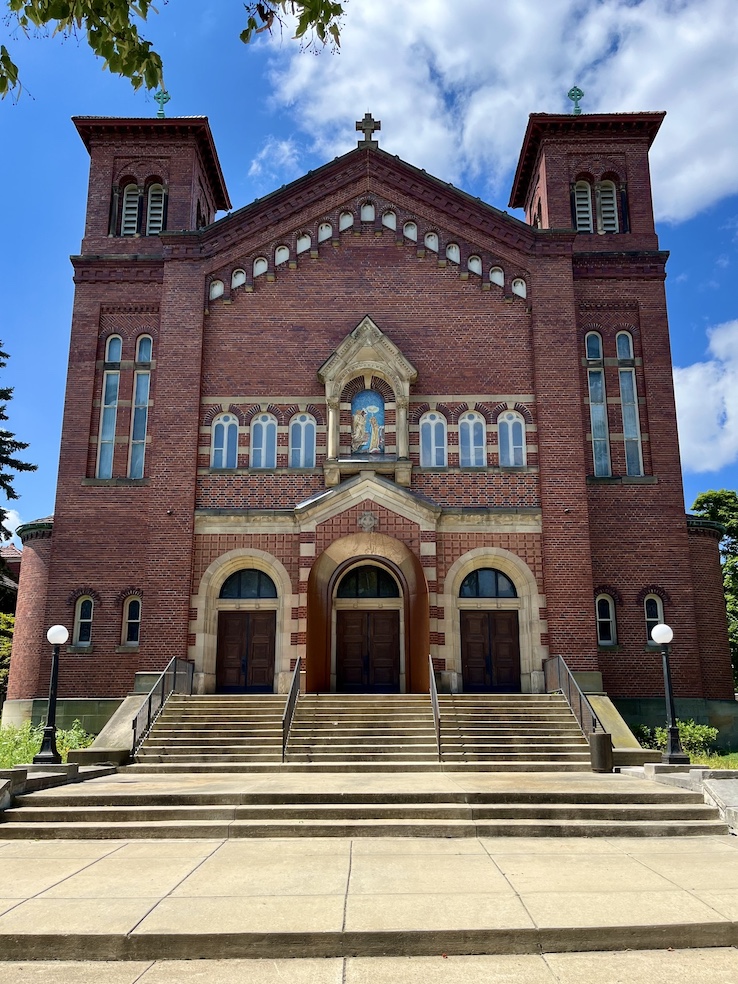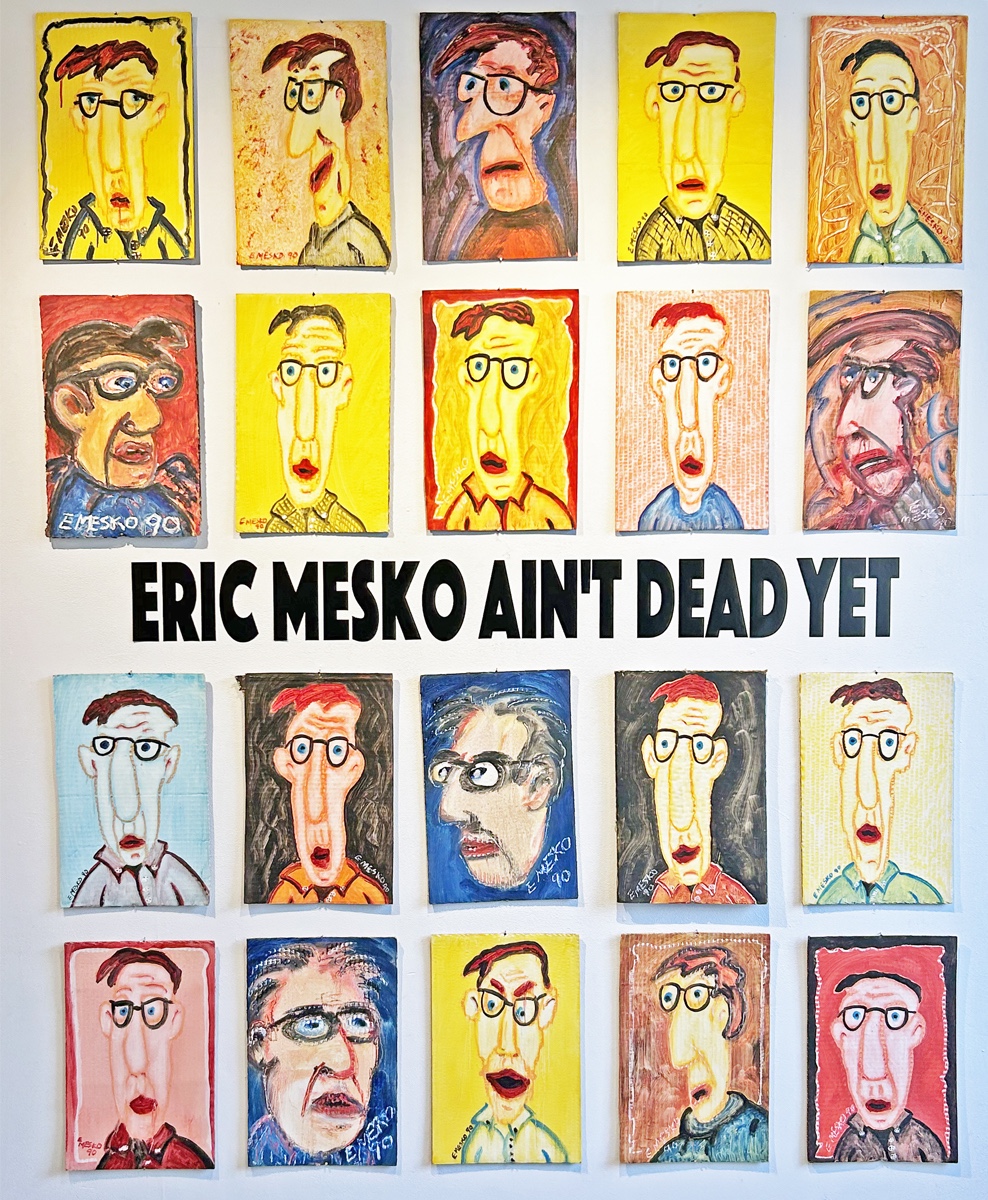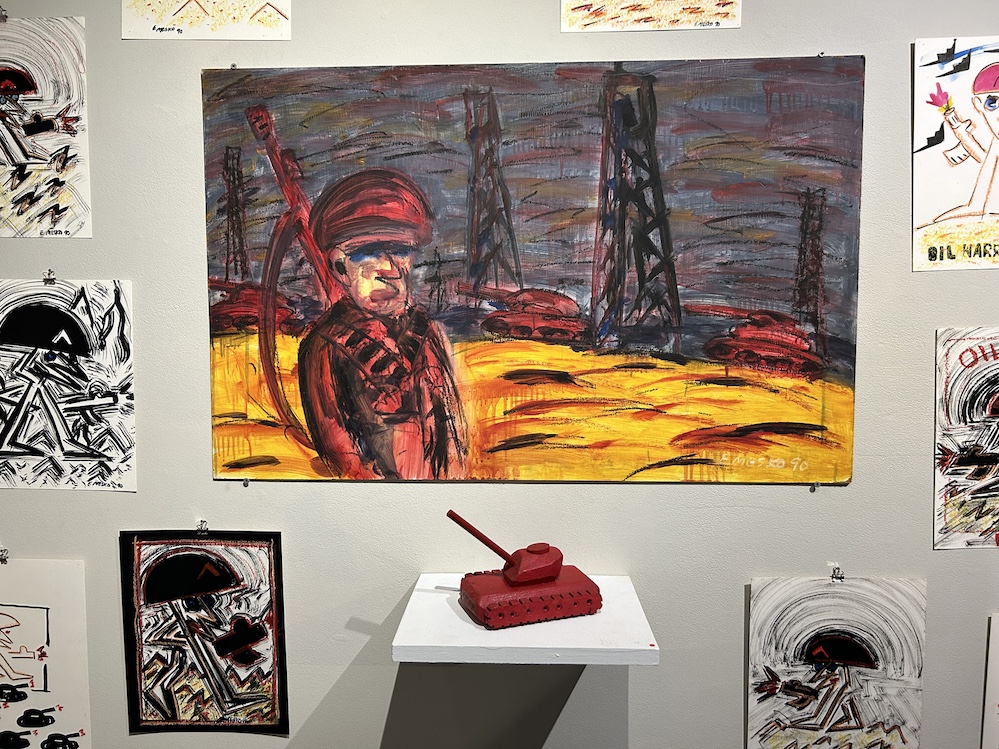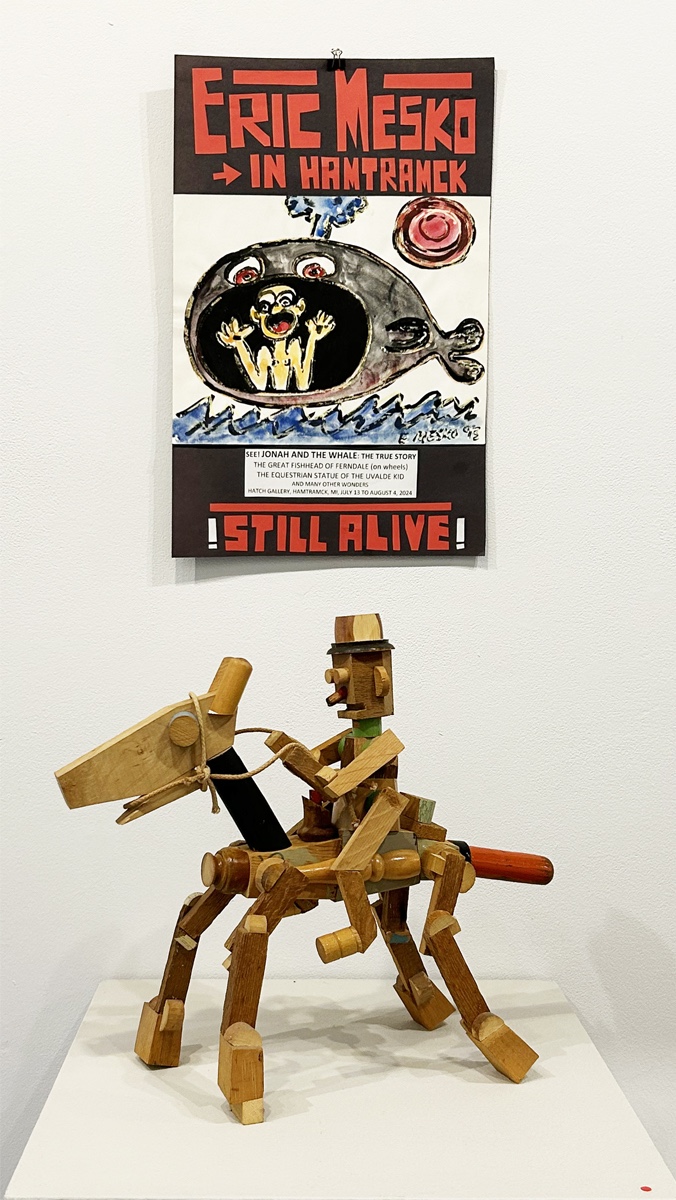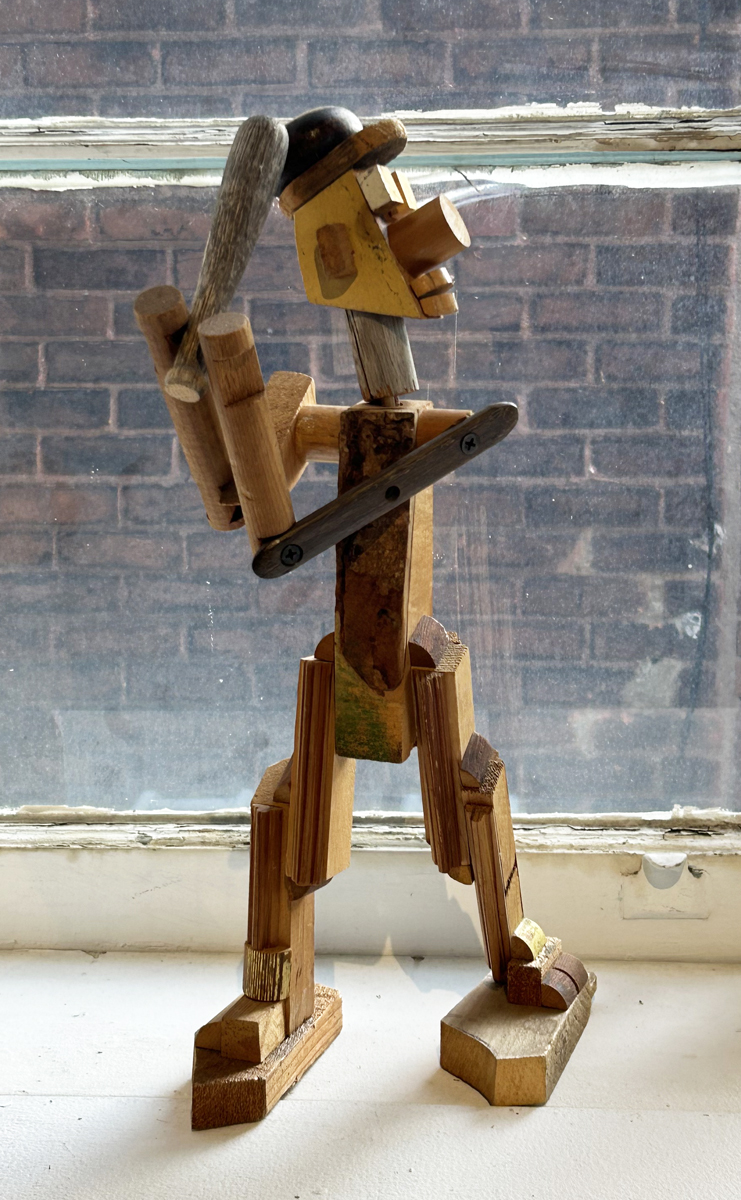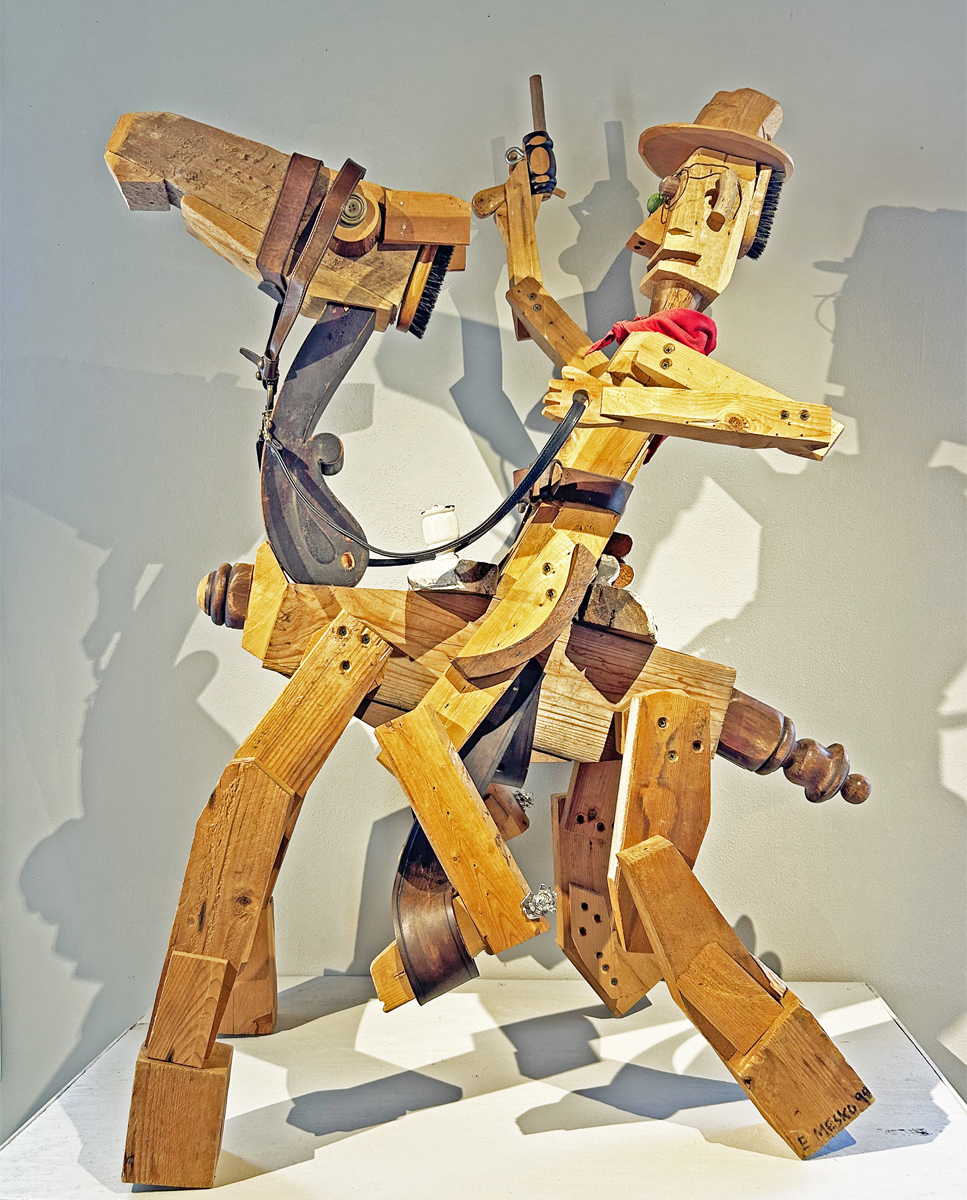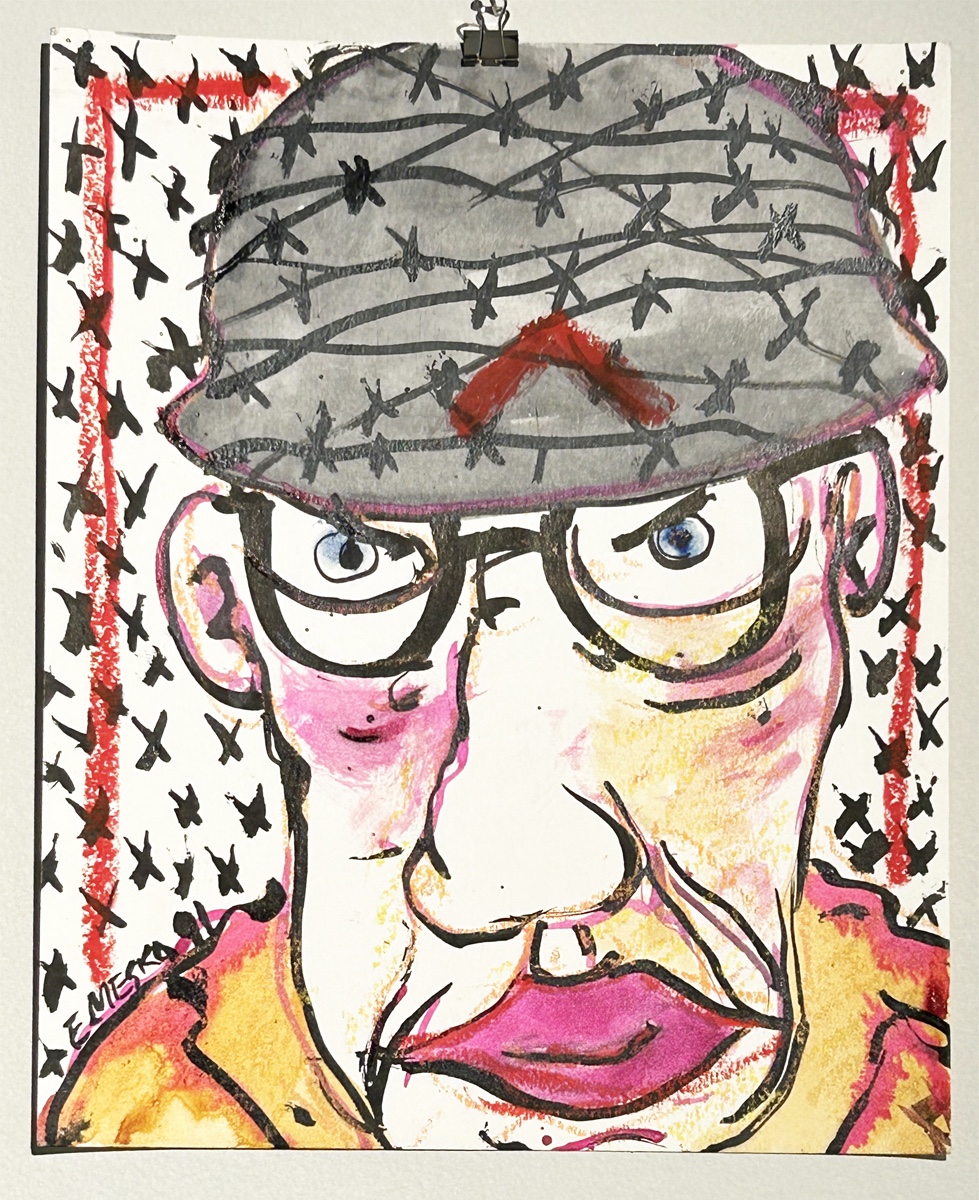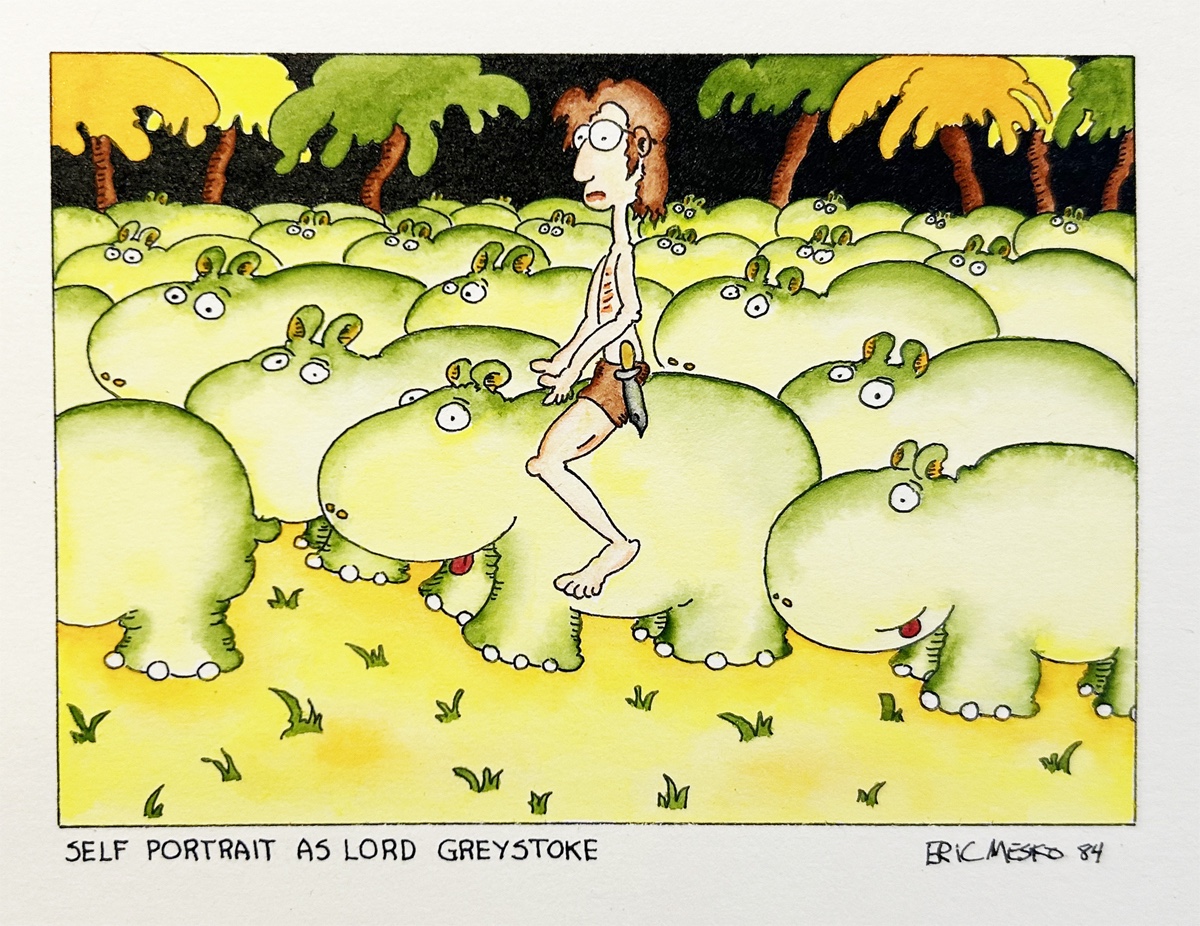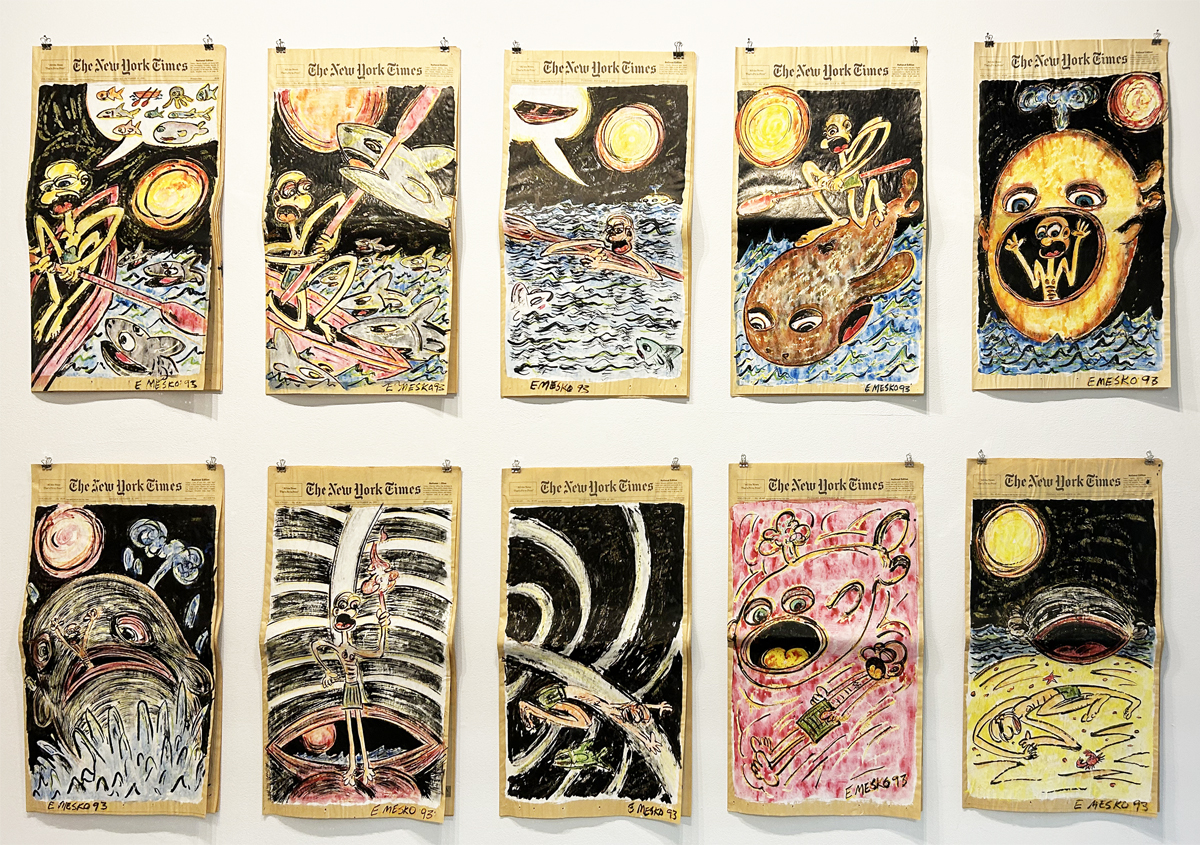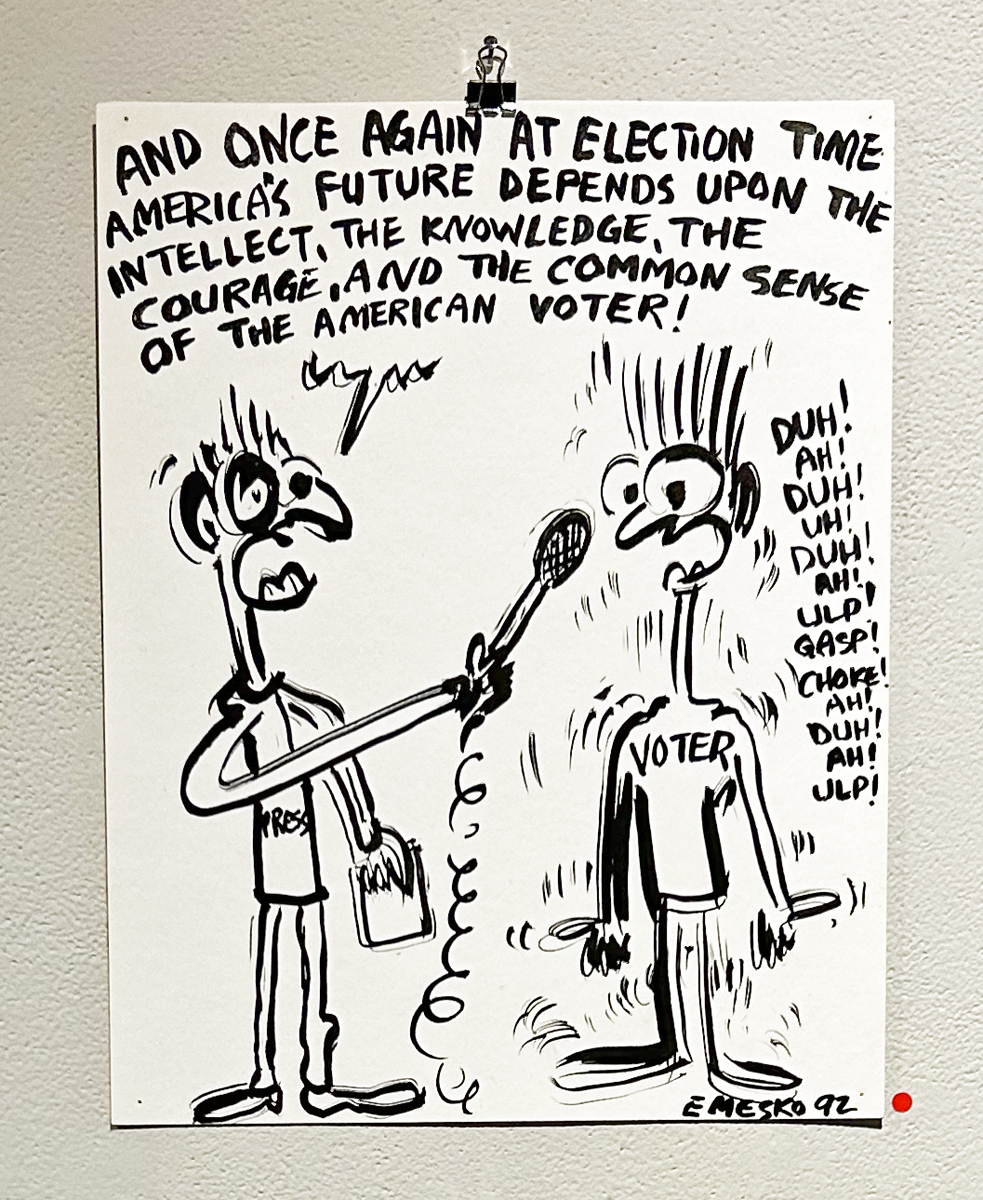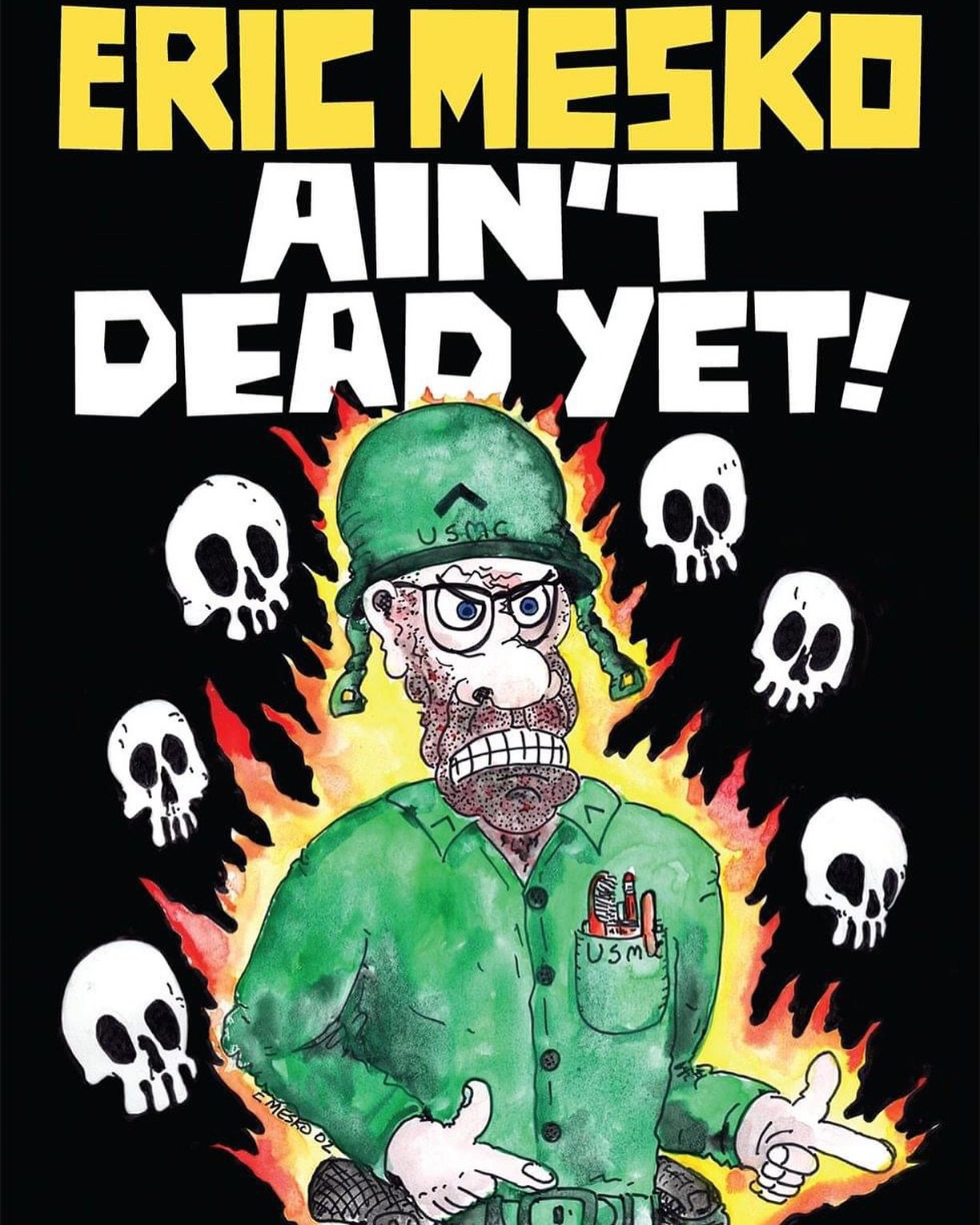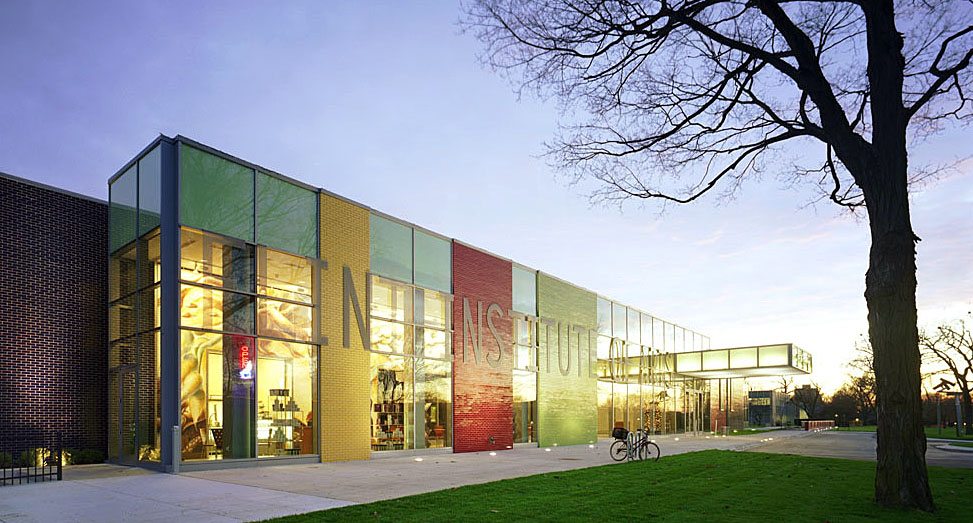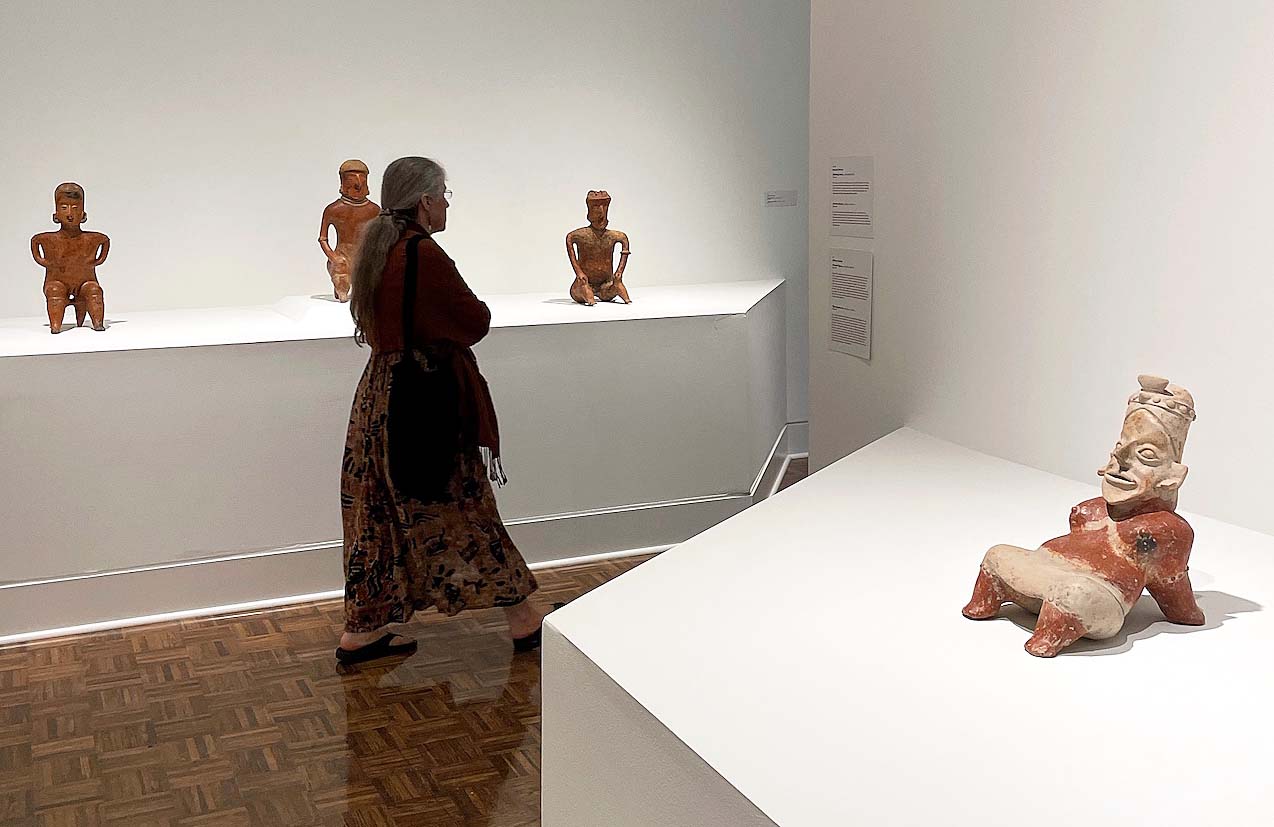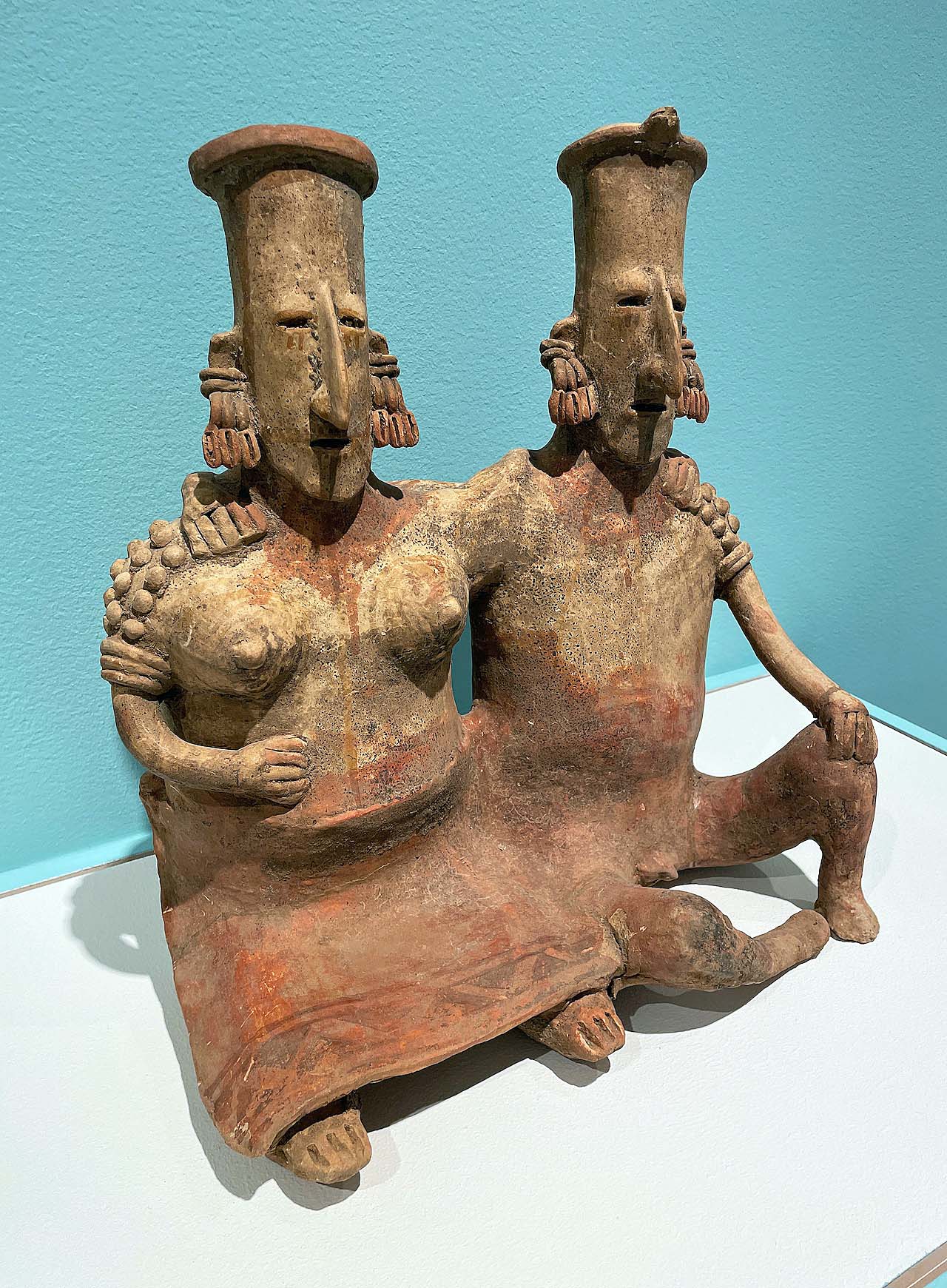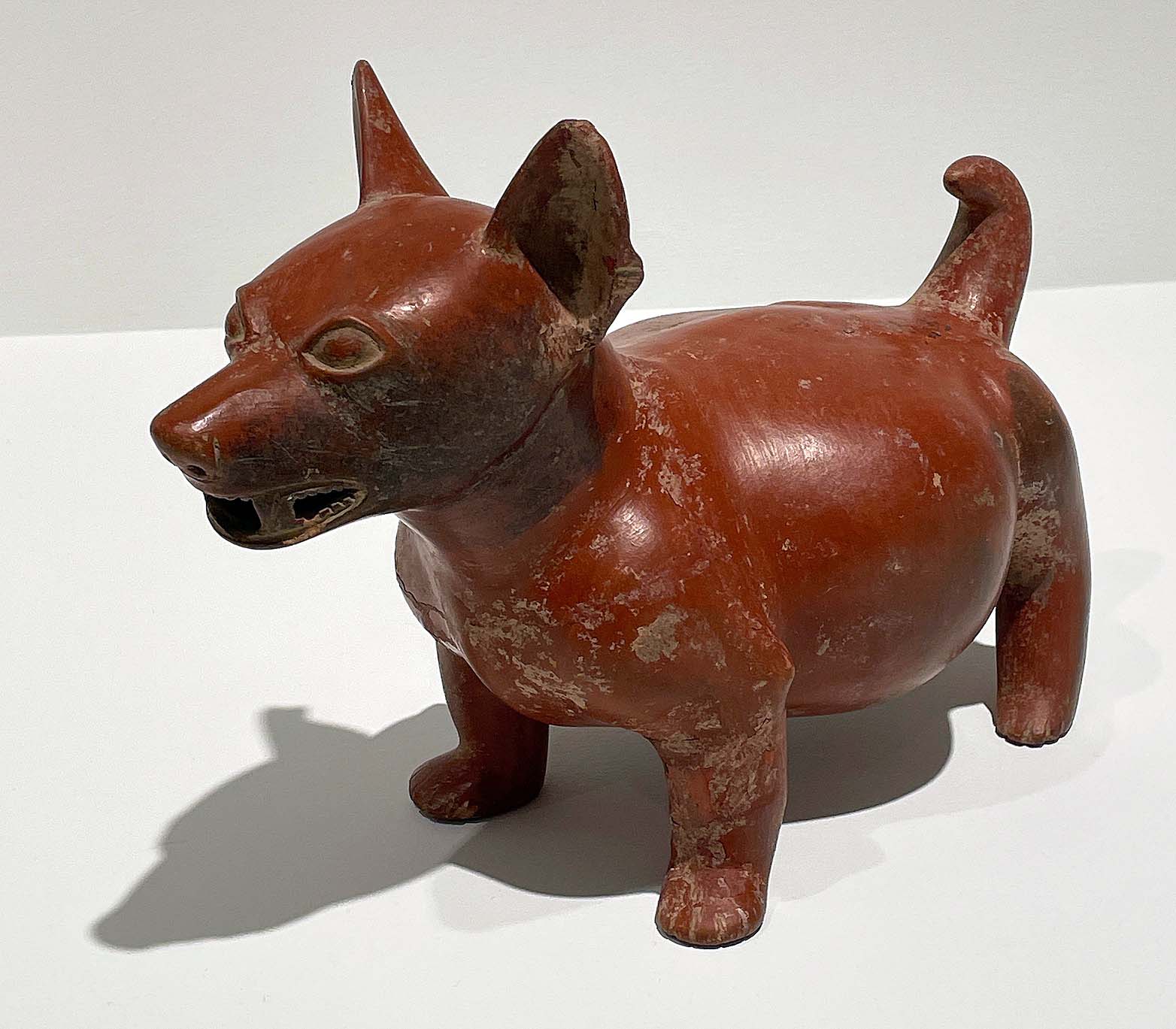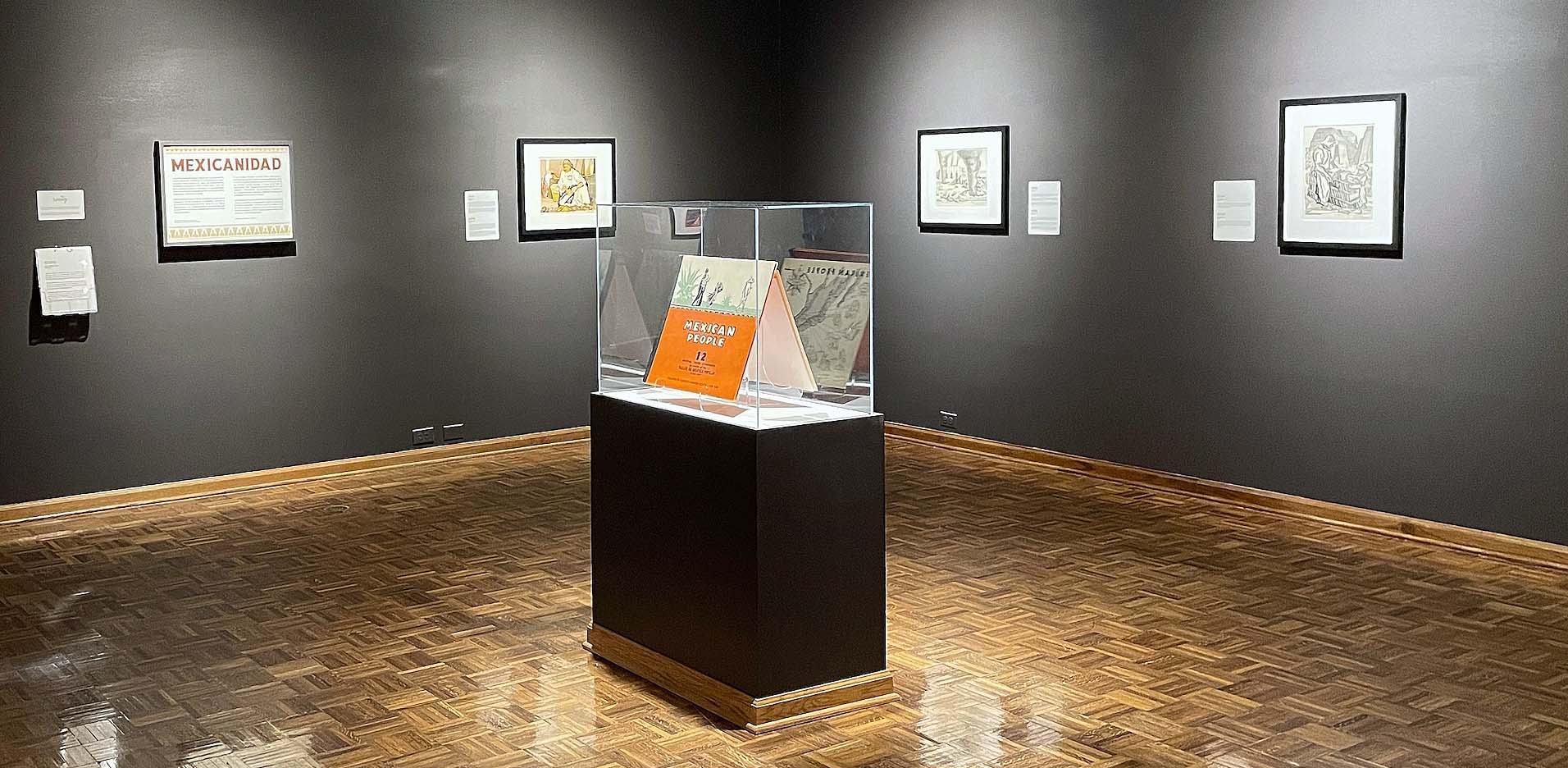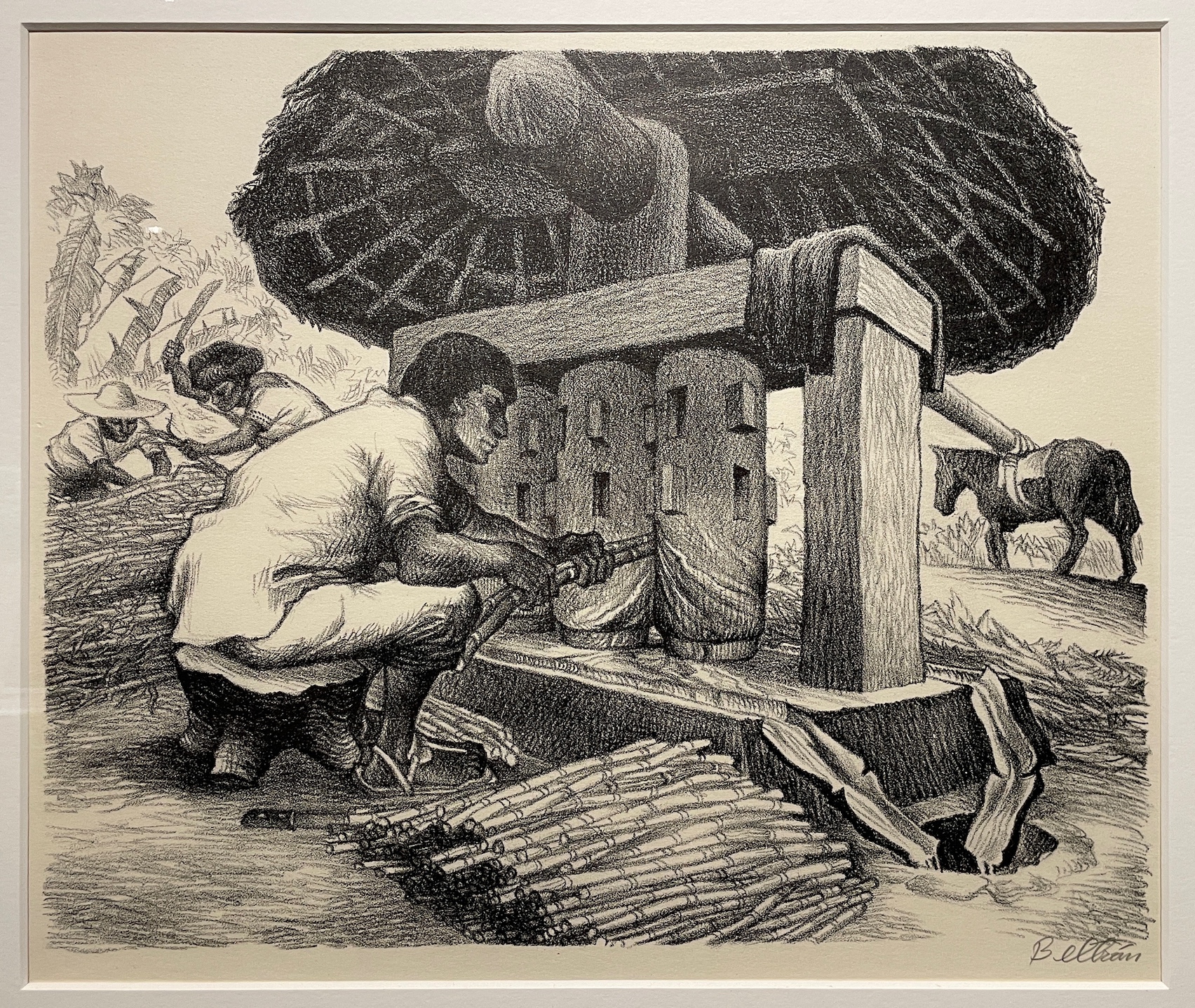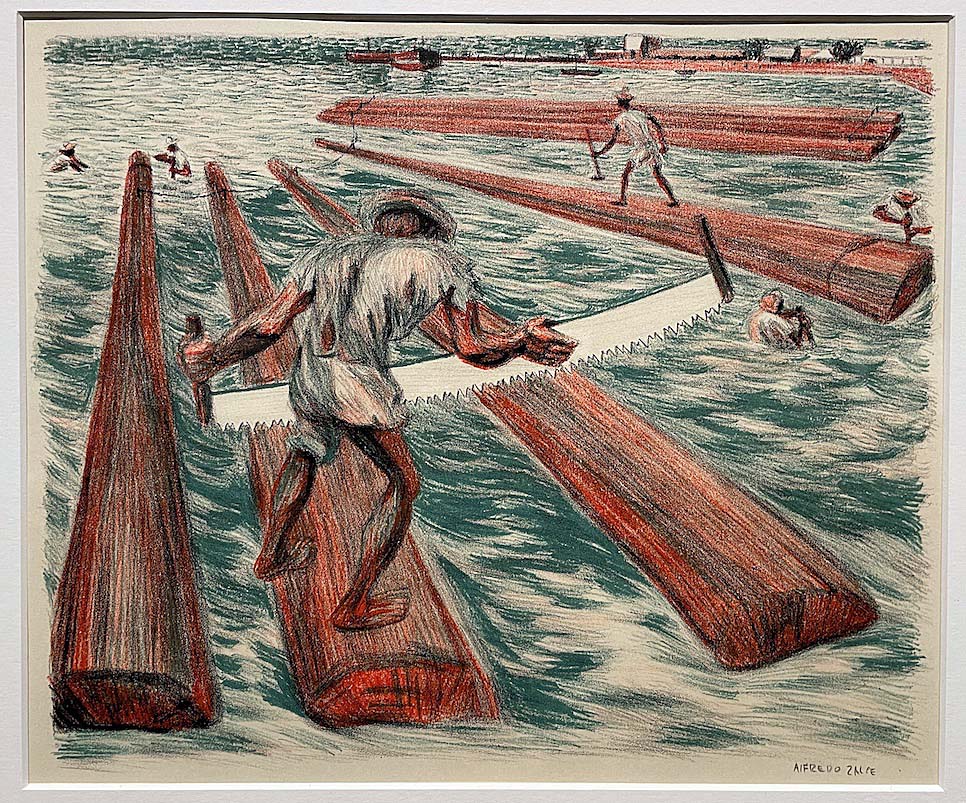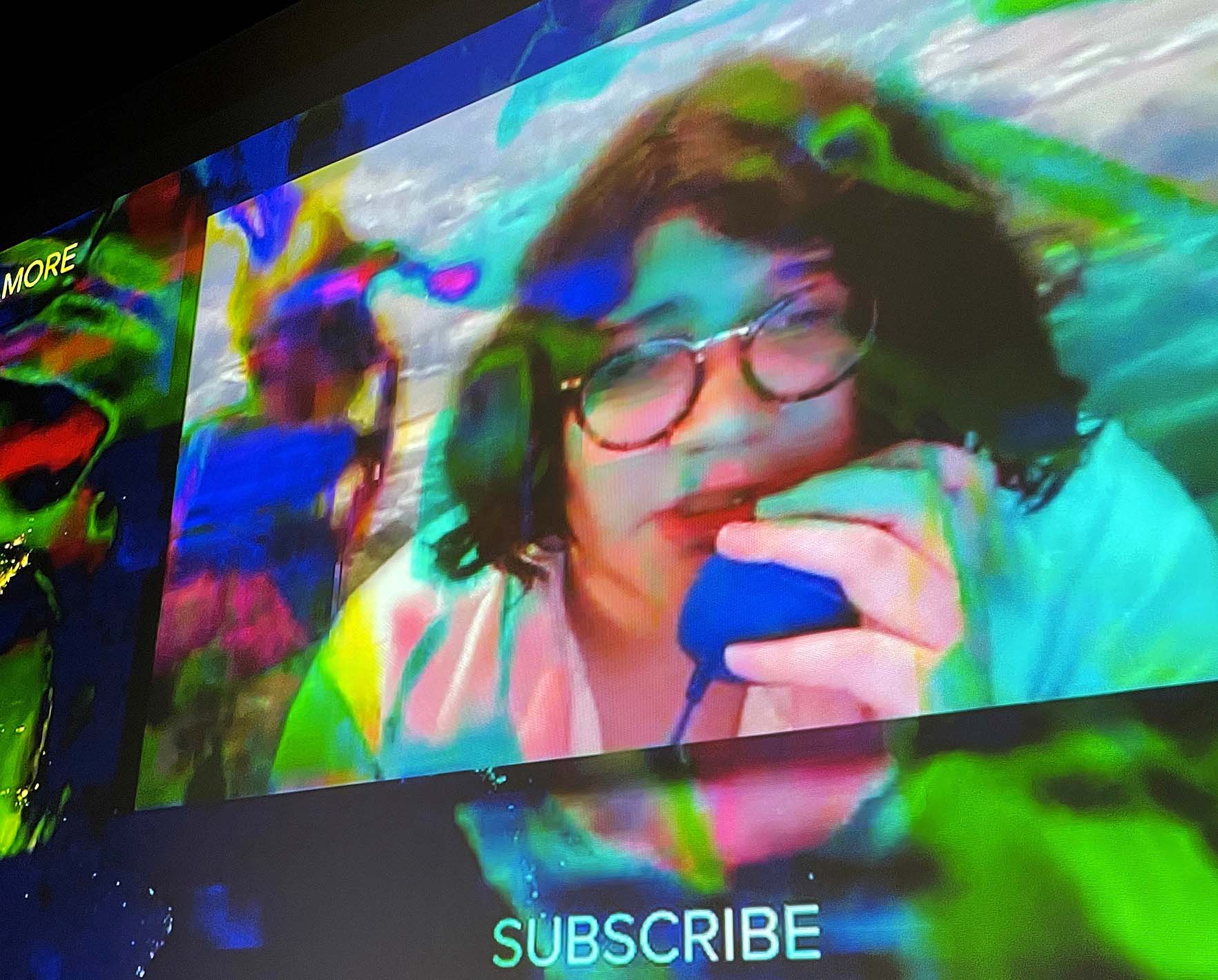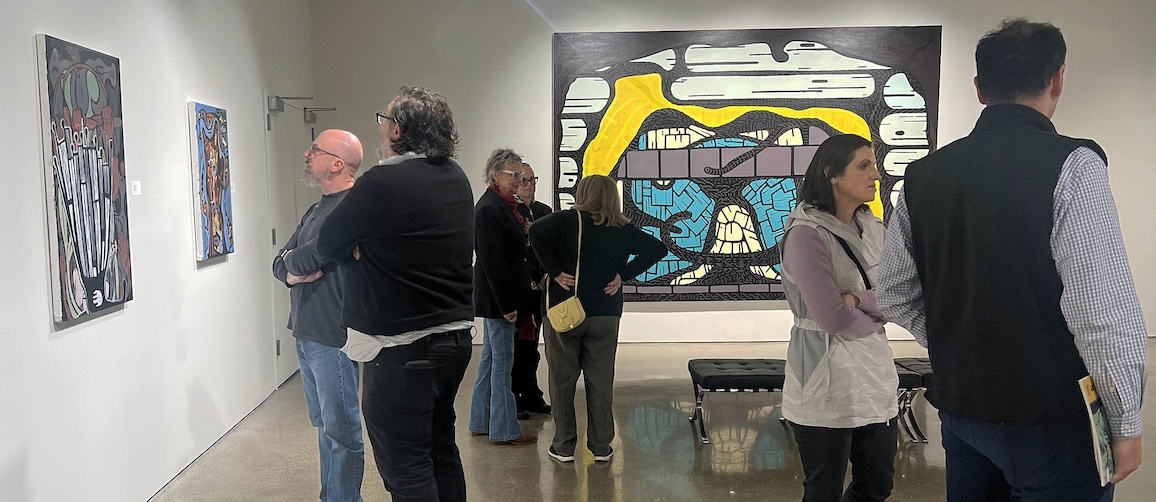
An installation view of Jim Chatelain: Correcting Past Mistakes, will be up at the Oakland University Art Gallery through November 24, 2024 (Photos courtesy of OUAG, except where noted.)
Continuing its tradition of outstanding exhibitions, the Oakland University Art Gallery presents Jim Chatelain: Correcting Past Mistakes, up through November 24. The 40 works on display, created between 2001 and 2024, represent an eruption of color and tangled abstraction, in some cases intriguingly intestinal in appearance. Altogether, the show opens a fascinating window on the non-figurative work of the celebrated Cass Corridor artist, now in his mid-70s, who’s still producing at an impressive clip.
Many people may be familiar with Chatelain’s earliest paintings that caused a sensation in the much-talked-about 1978 “Bad” Painting show at Manhattan’s New Museum — crudely outlined urban figures of the sort you might have seen on Cass Avenue in those years, rendered with seemingly slapdash brushstrokes and an air of menace. Subsequent figurative work involved a weirdly magnificent series of facial portraits, full of distorted and bulbous features, that – never mind their odd appearance – manage to be both poignant and disturbing in equal measure.
In a biographical essay for the Paul Kotula Projects gallery in Ferndale, Robert Storr – who long headed the Museum of Modern Art’s department of painting and sculpture – urged art enthusiasts to “take a walk on the wild side with [Chatelain] as your guide. You’ll meet a cast of hard-bitten urban types, [with] extraordinary toughness whose heavily lined faces bear the unmistakable trace of what it takes to just keep going in the late modern purgatory that is big city life in our time. Chatelain knows these people inside and out; he’s their recording angel.”
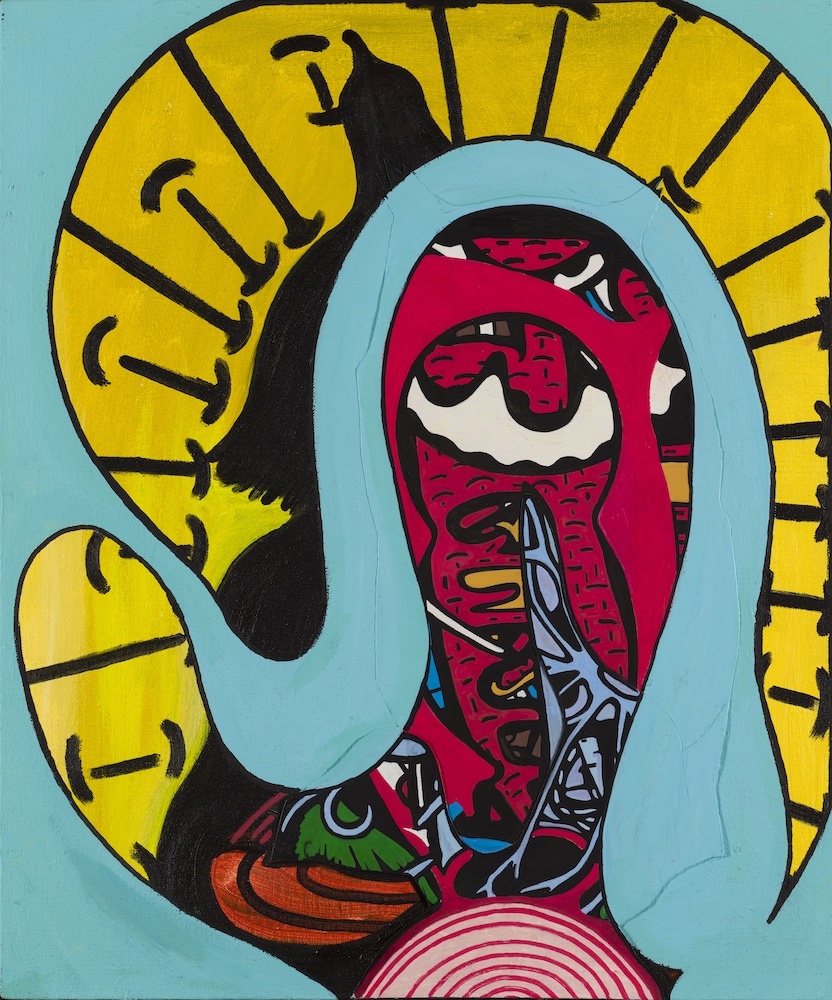
Jim Chatelain, Untitled, Acrylic paint, paint pen 0n linen paper, 24 x 20 inches, 2023.
Compared with those gritty predecessors, one of the delights of Correcting Past Mistakes is just how beautiful these twisted abstracts, often suggesting collapse and calamity, really are. Curator Ryan Standfest, an artist who teaches at Oakland and has long been a Chatelain admirer, describes the works as “frenzied and active” with an “aura of tumult.” Yet these are meticulously crafted works, never mind their vaguely cartoon-like appearance. “The paintings are vibrant, with colors that pop,” Standfest says. “One color doesn’t cancel out the other – they support each other quite well.” This echoes the artist’s own appraisal. In an interview with Standfest in the show’s handsome catalog, Chatelain describes his choice in colors as “really pop-y. My palette is really like that. It’s the blue of the Superman costume and the red of the cape.”
Chatelain, who maintains a studio in Ferndale as well as one in Delhi, New York, about 120 miles from Manhattan, hails from Findlay, Ohio. In 1967, he transferred from Findlay College to Wayne State University, sight unseen, graduating with a BFA in 1971. While at Wayne, he studied painting with John Egner, a professor who was a co-founder of the legendary Willis Gallery and a key mentor to much of the early Cass Corridor talent. Their collective work finally got the official stamp of approval in 1980 when the Detroit Institute of Arts pulled together the seminal show Kick Out the Jams: Detroit’s Cass Corridor 1963-1977.
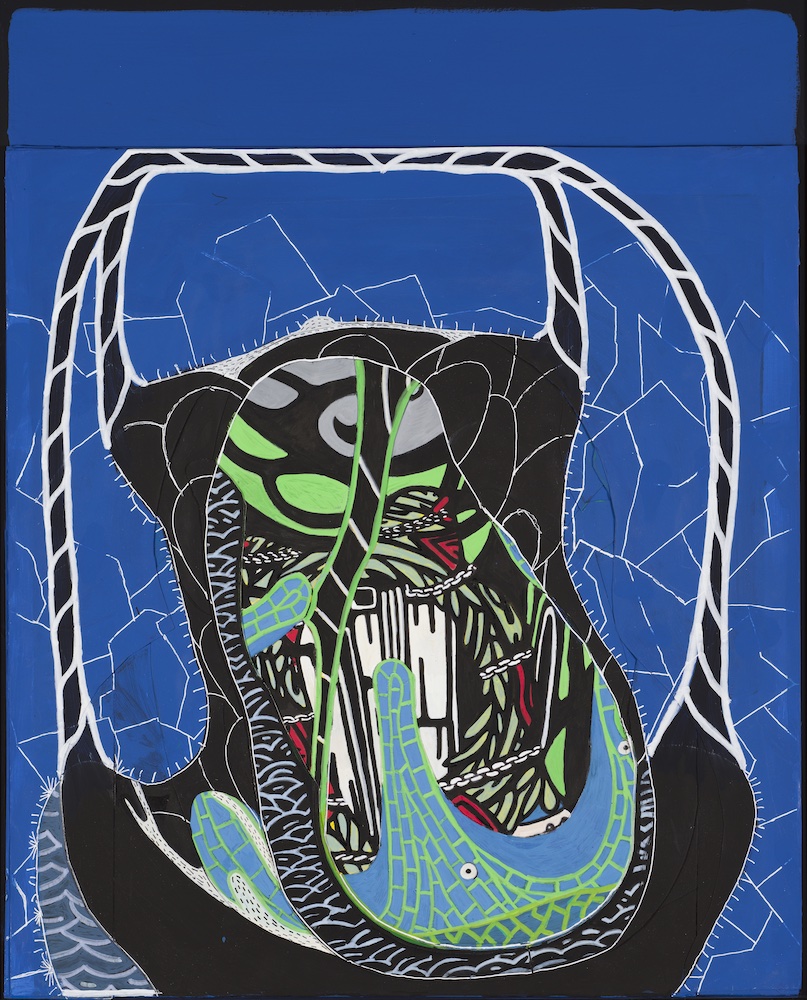
Jim Chatelain, Basket, Acrylic paint pen with vinyl paint on paper and mat board, 21 ½ x 17 inches, 2024.
The recent abstracts on display at OUAG are remarkably immersive and seductive. Go ahead — just try to resist their labyrinthine magnetism. In her catalog essay, critic Lynn Crawford describes the works as “unfamiliar, uncanny, yet bursting with life.” And indeed, it’s hard not to get sucked into their twisted contours, where something – digestion, perhaps? – is clearly going on. For her part, Crawford refers to “blended strands of lifeforms” that “radiate an energy and are possibly equipped to take on initiatives themselves.”
Yet there’s also a series of constructions that employ Phillips-head screws as their chief element and mostly rely on a muted palette that stands in sharp contrast to the boldly colored works that constitute the majority of the show. One can’t help but be struck by the exertion that went into these pieces, and they manifest an air of struggle and threat that sets them apart, echoing some of the ominousness in Chatelain’s early figurative work.
Even the title of one, Head on a Plate, implies danger. Standfest laughs when asked about these works. “There are an insane number of screws on them,” he says. “Talk about violence! Just imagine Jim screwing each one of those in, over and over.” He adds, “I’ve never asked him if he had a strategy, whether he marked off where they would go or just made it up as he went along.”
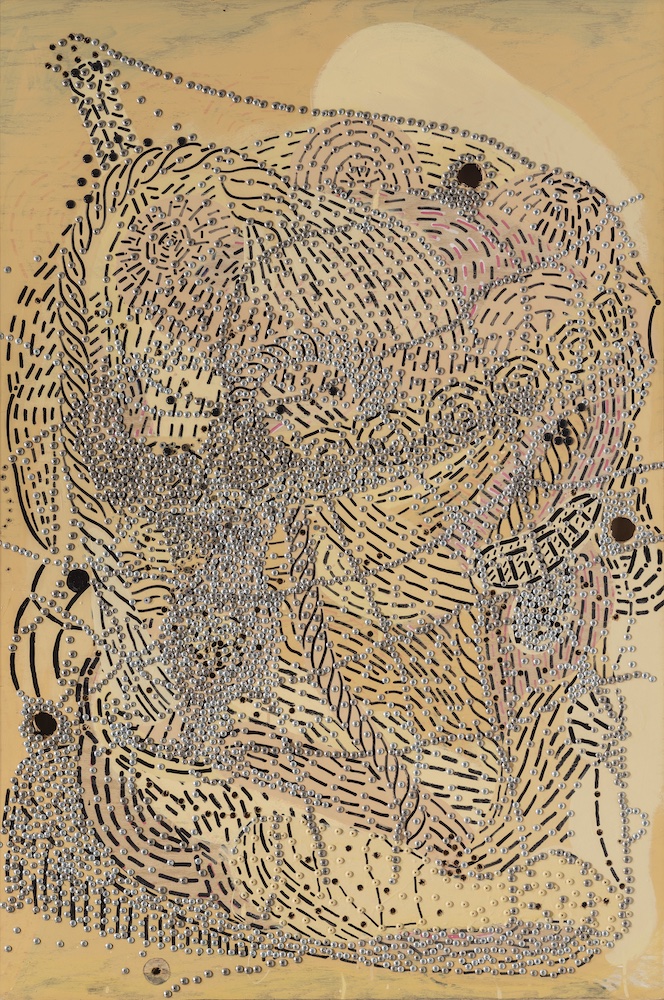
Jim Chatelain, Head on a Plate, Enamel paint, screws on plywood, 48 x 32 inches, 2001.
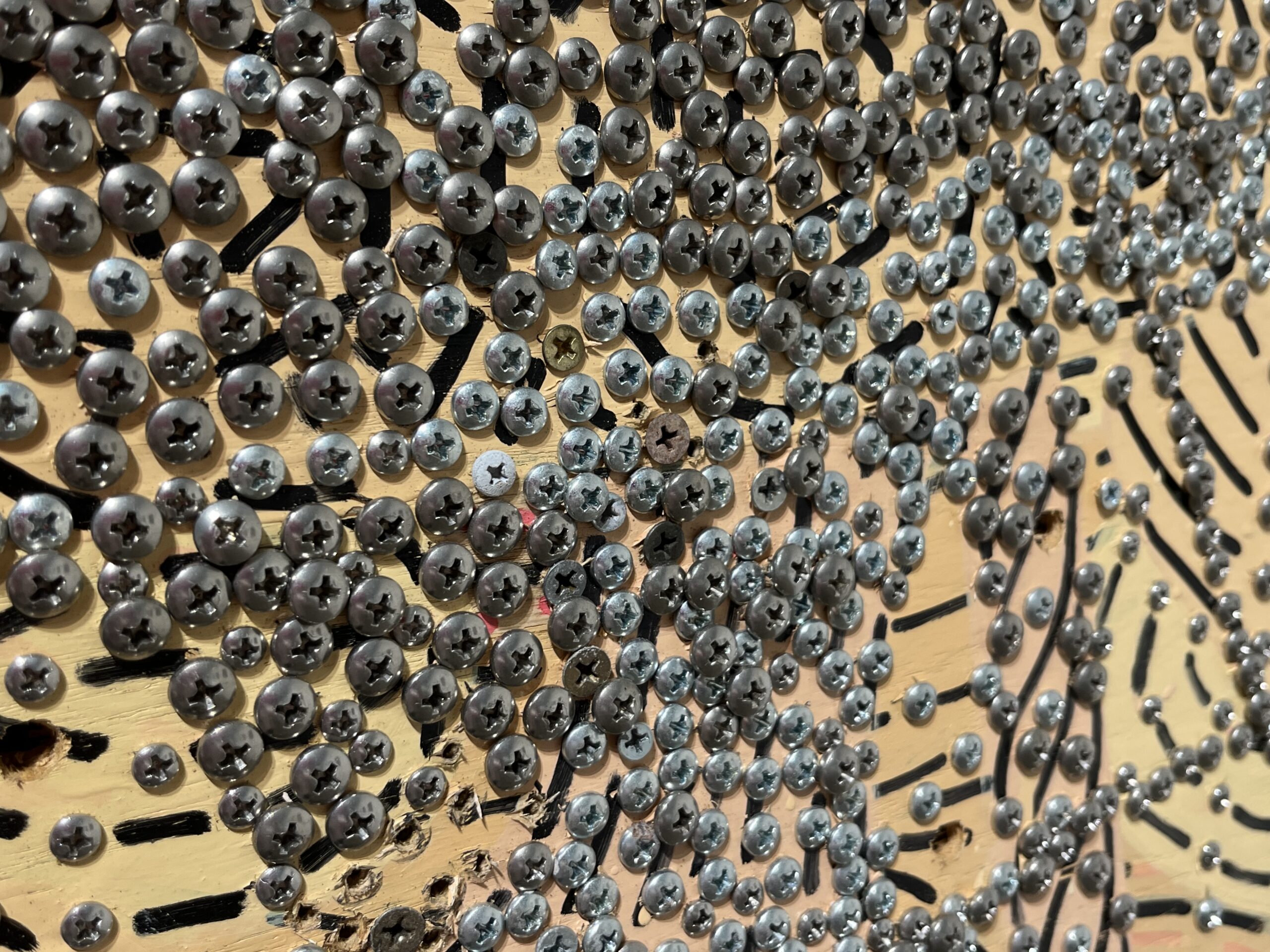
Jim Chatelain, Head on a Plate (detail), Enamel paint, screws on plywood, 48 x 32 inches, 2001. (Photo: Detroit Art Review)
Yet the title above also points to another key element of Chatelain’s oeuvre, a dark humor that ripples through many works. Standfest argues there’s “something of a violent physical comedy to Jim’s work that links to the [earlier] figures in some ways. He describes the figurative work as ‘situations,’ and there’s a tension in that.” Chatelain himself acknowledges a certain puckishness to much of what he’s produced. “In those early 70s figure paintings, there’s humor in those. They’re cartoonish in some ways,” he says. “It’s a little harder to do with the abstract work, but I think it can be done, [though] I can’t say that’s the case with all of it or most of it.” Chatelain sums it all up in a refreshing artistic philosophy: “It’s a failed painting that doesn’t have a little humor coming out of it.”
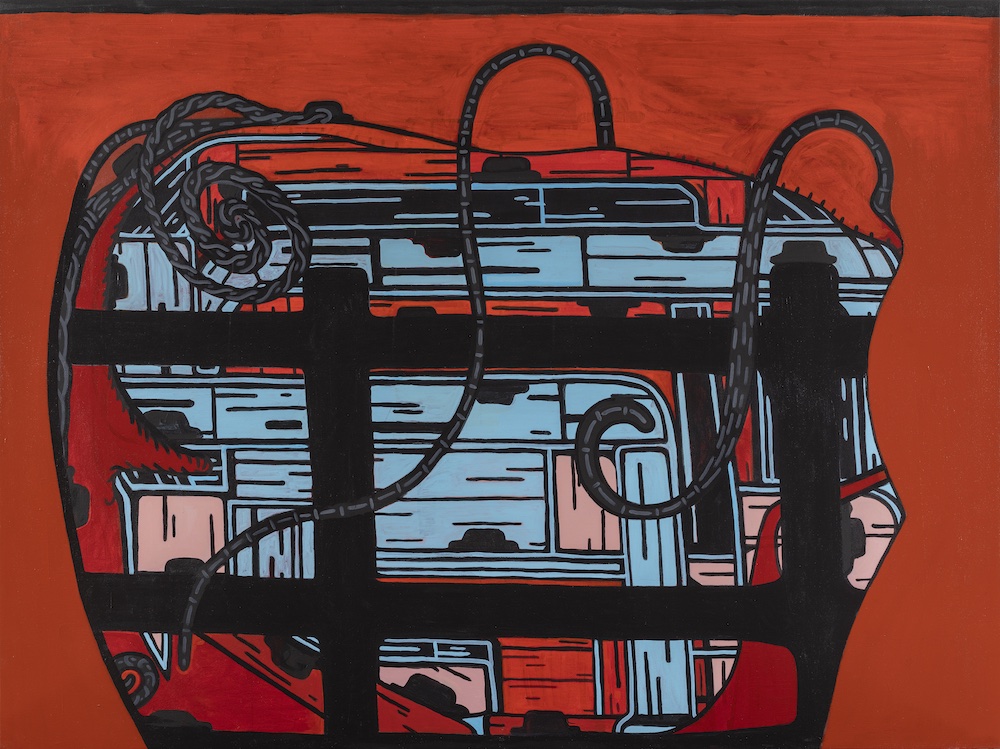
Jim Chatelain, The Caged Flea, Acrylic on canvas, 72 x 96 inches, 2015.
The gallery will host three talks open to the public before the show closes. On September 26, curator Ryan Standfest will lead a walkthrough of the show. On October 30, Dan Nadel, who’s curating an alternate history of American art in the 1960s for New York’s Whitney Museum, will speak. On November 6, Standfest will interview Chatelain. All gallery talks take place at noon.
Jim Chatelain: Correcting Past Mistakes will be up at the Oakland University Art Gallery in Rochester through November 24, 2024.

